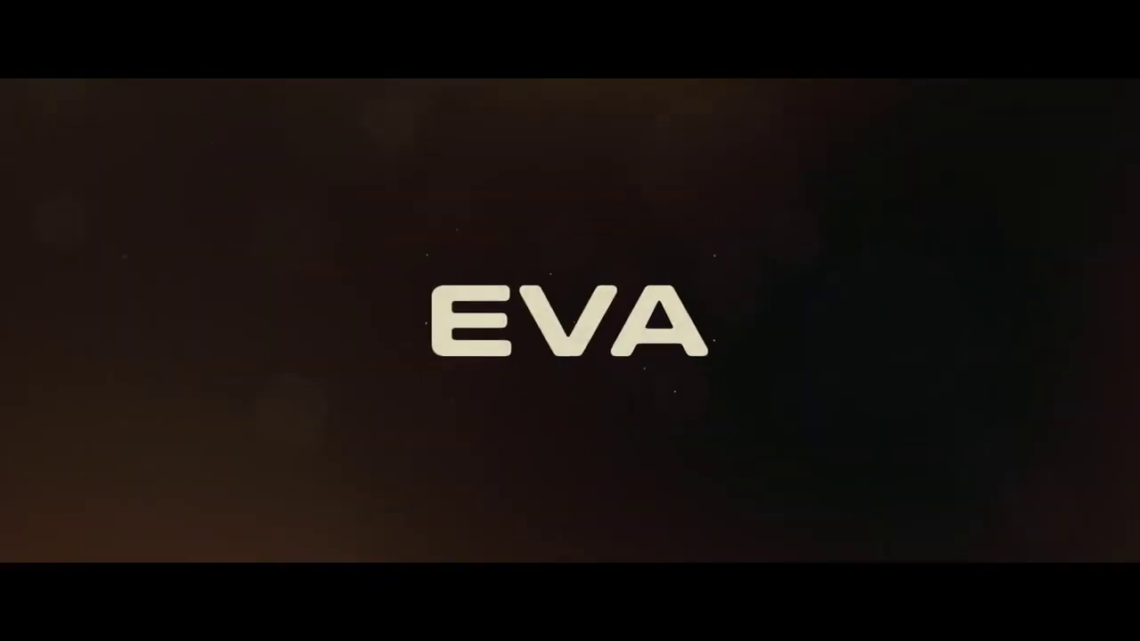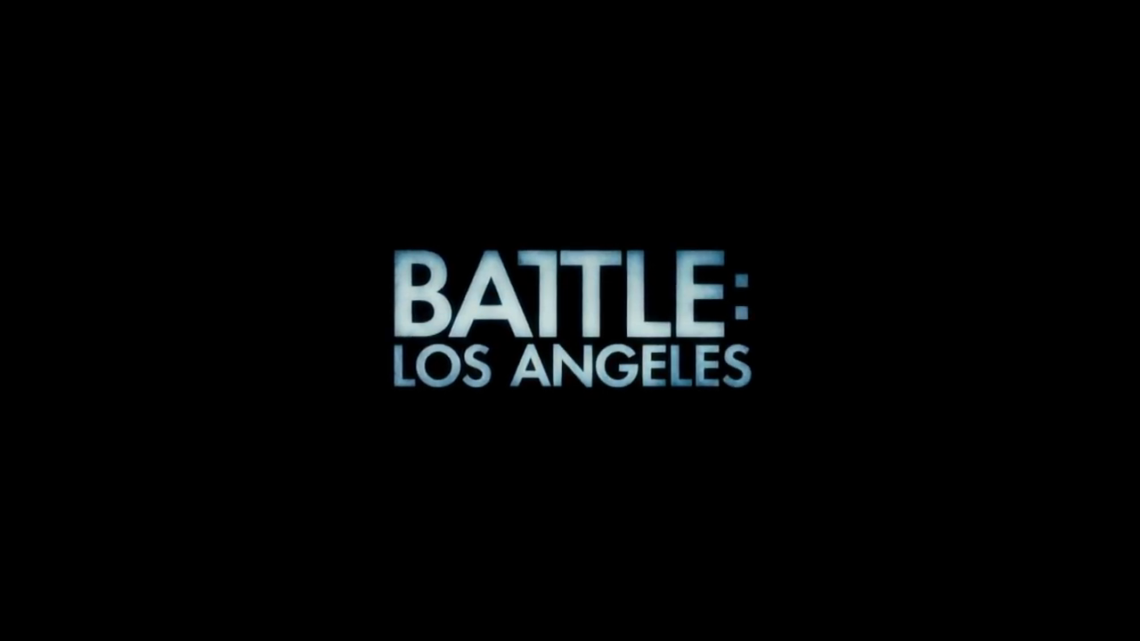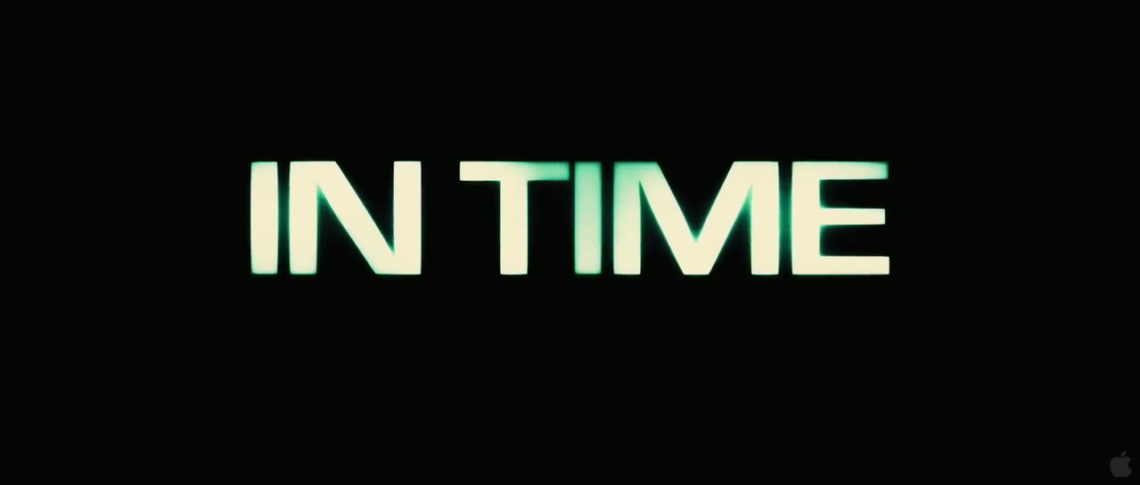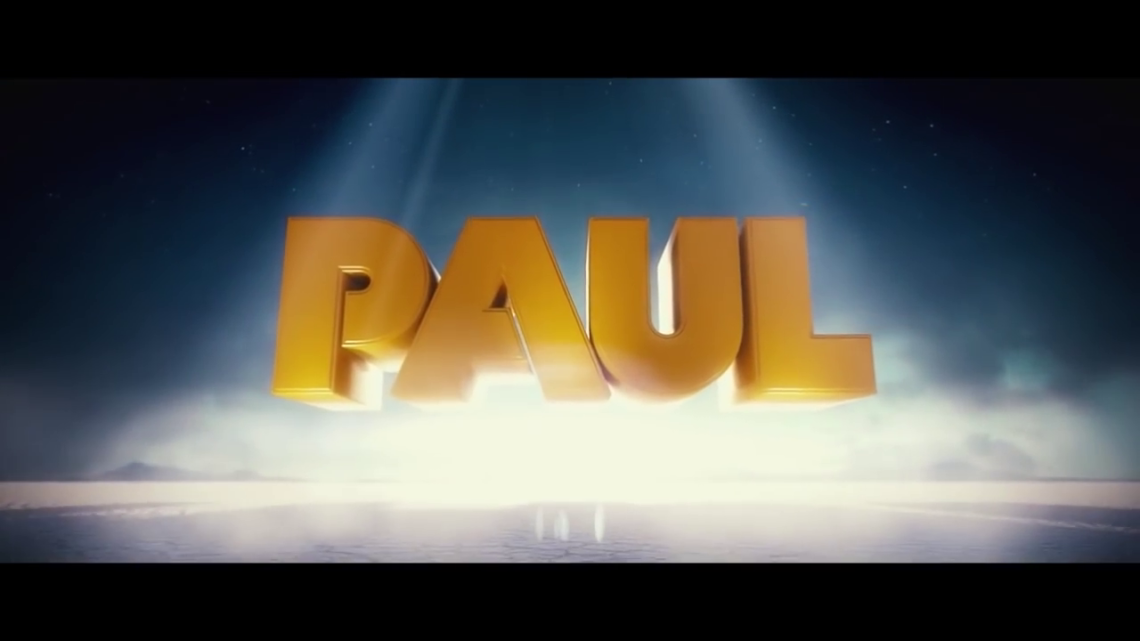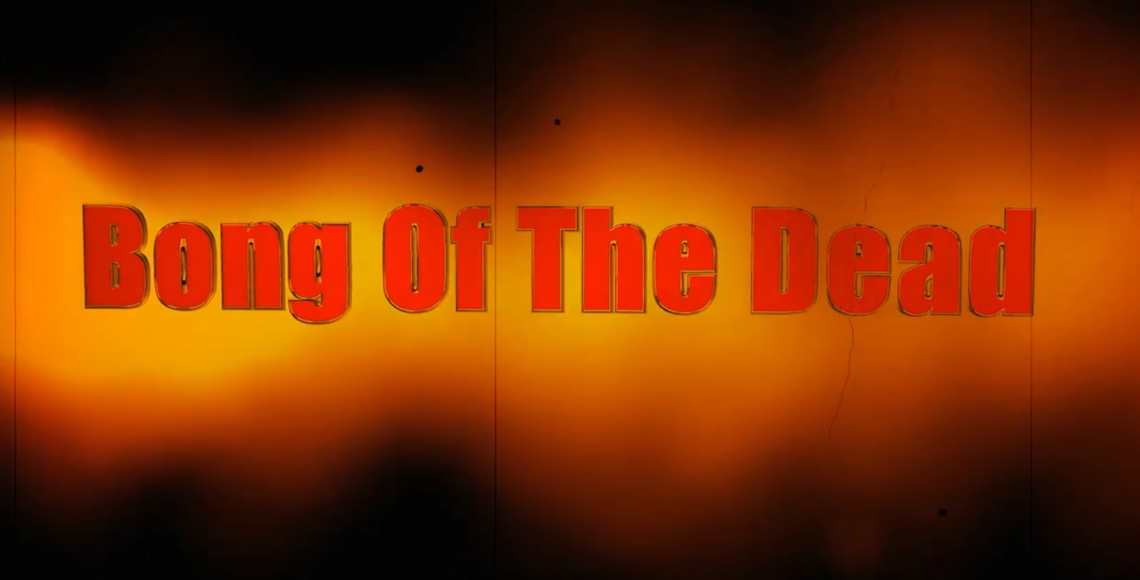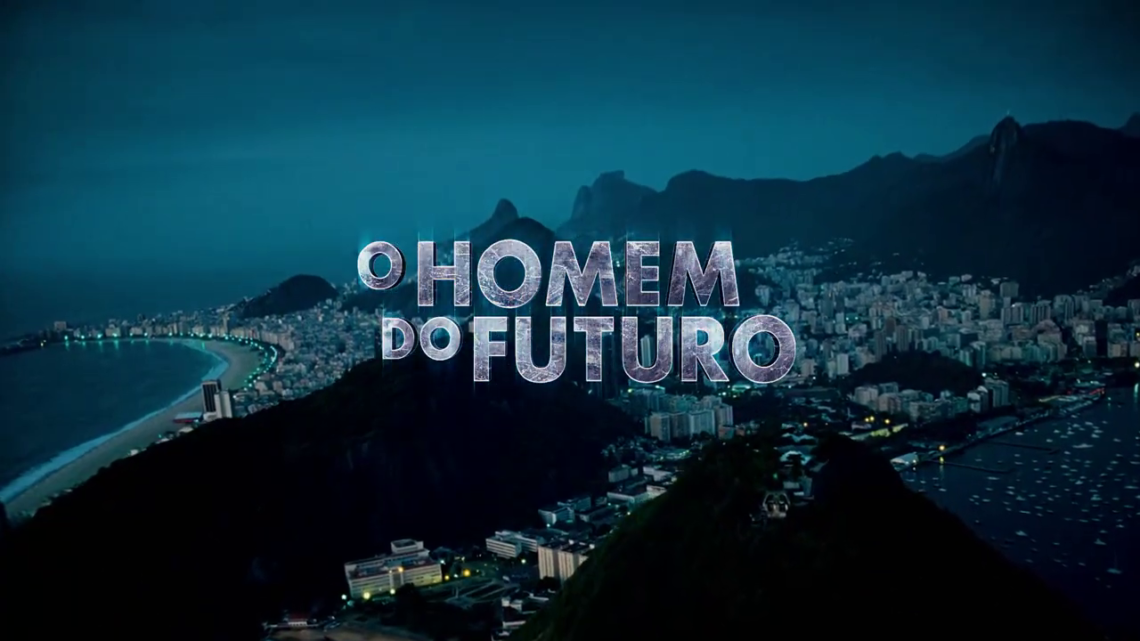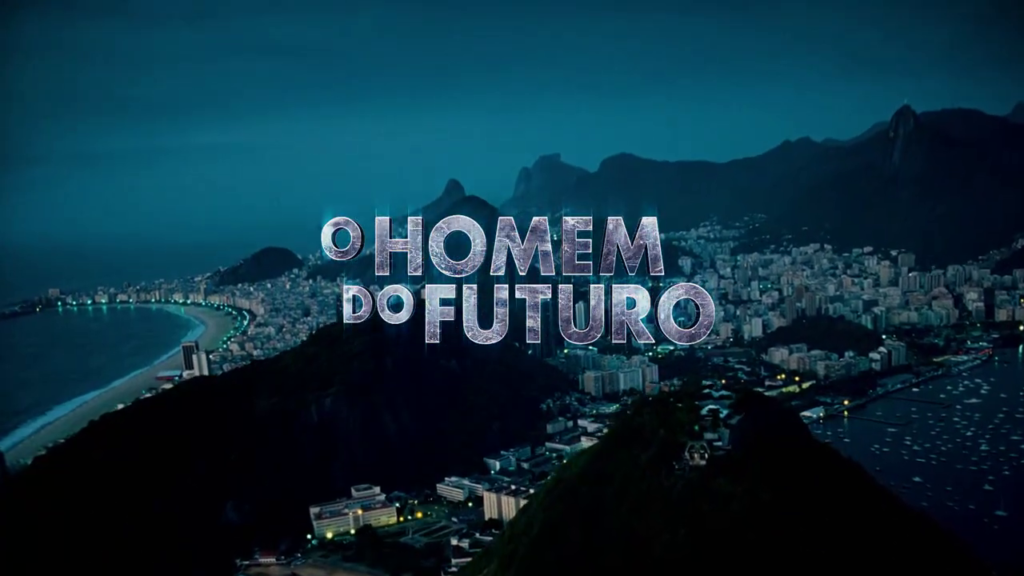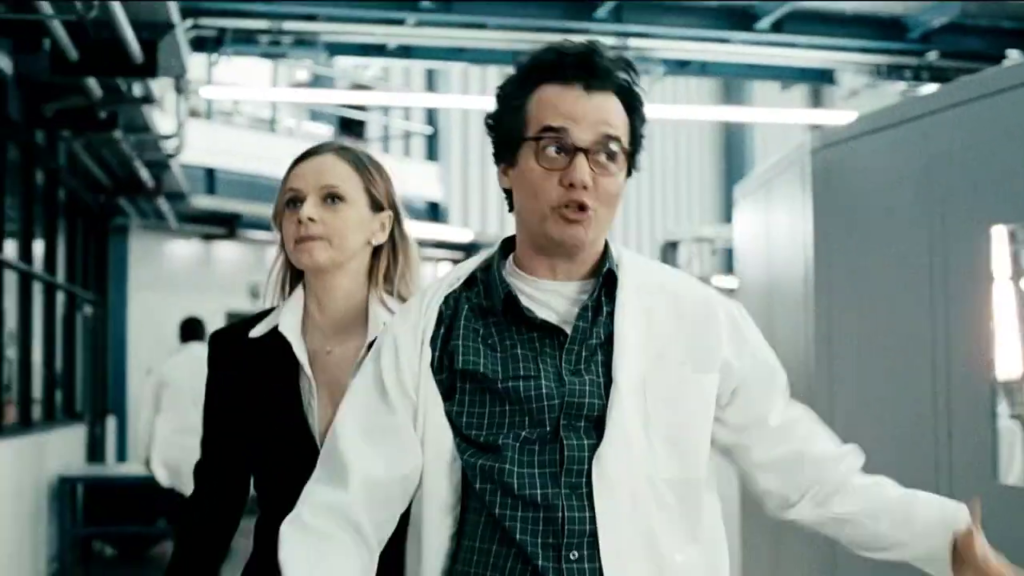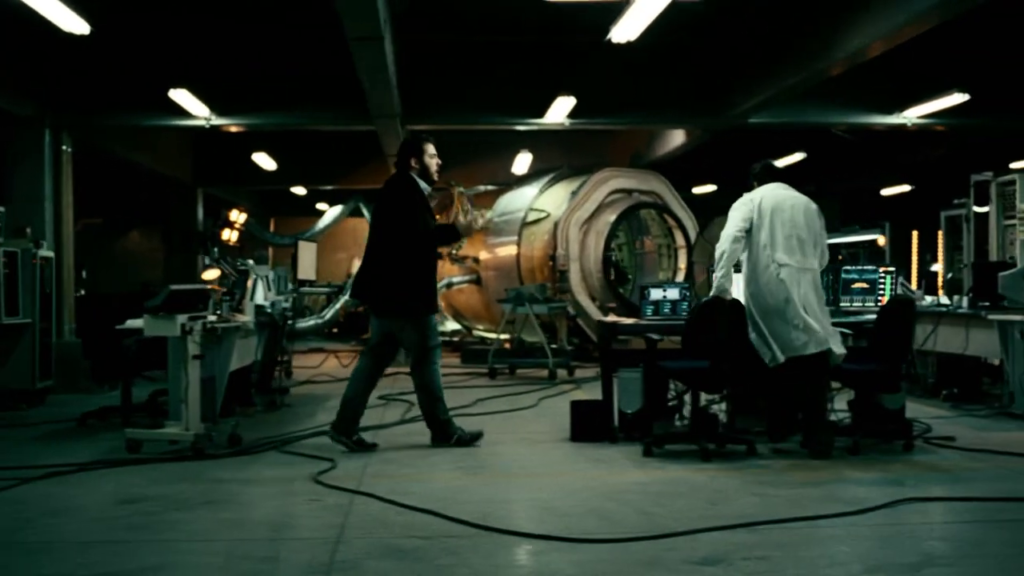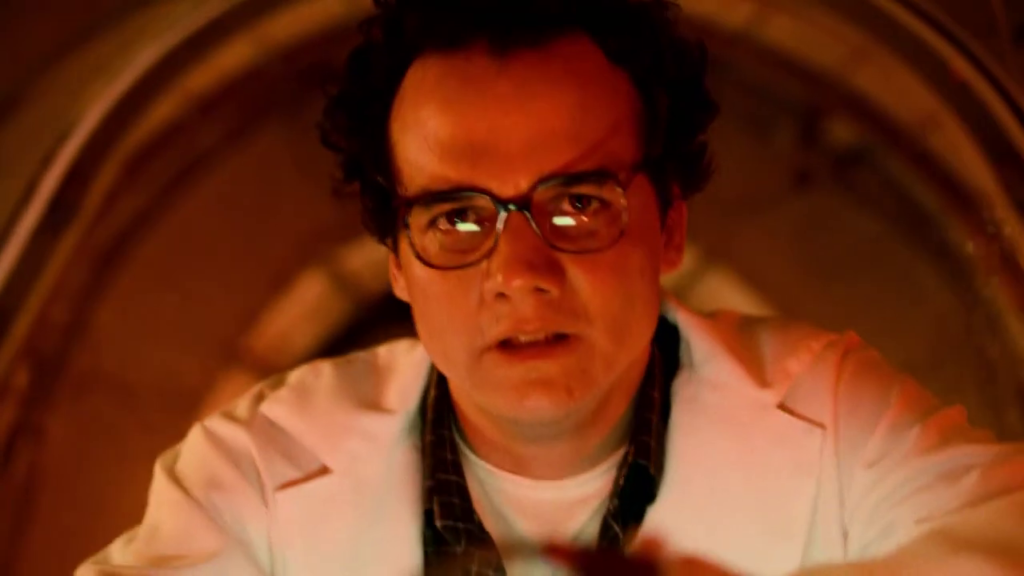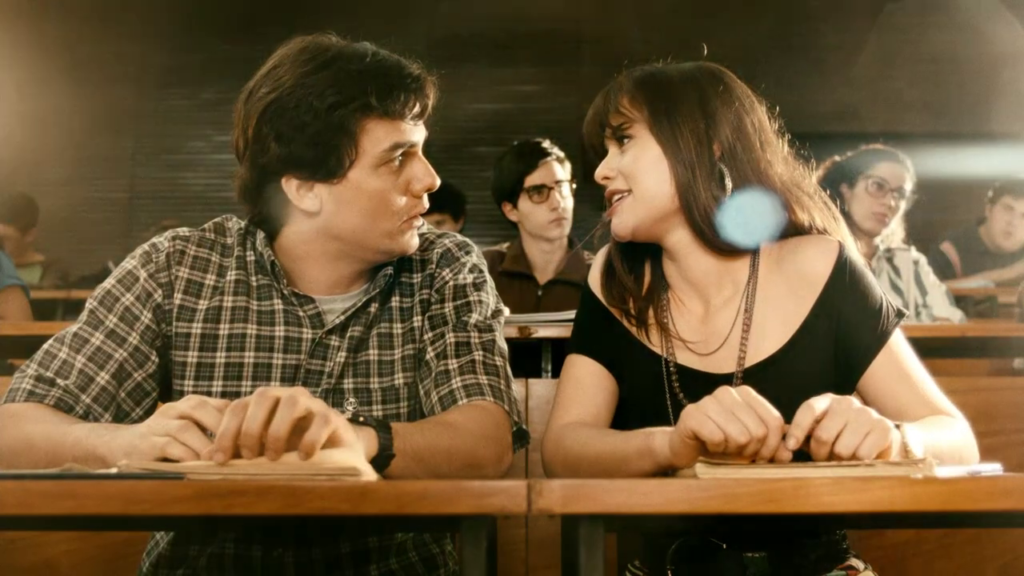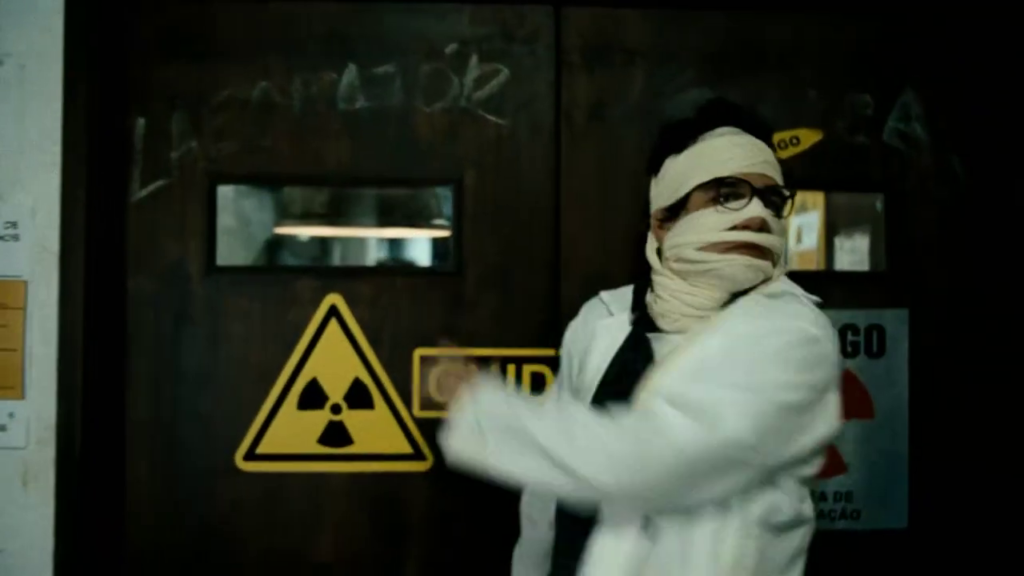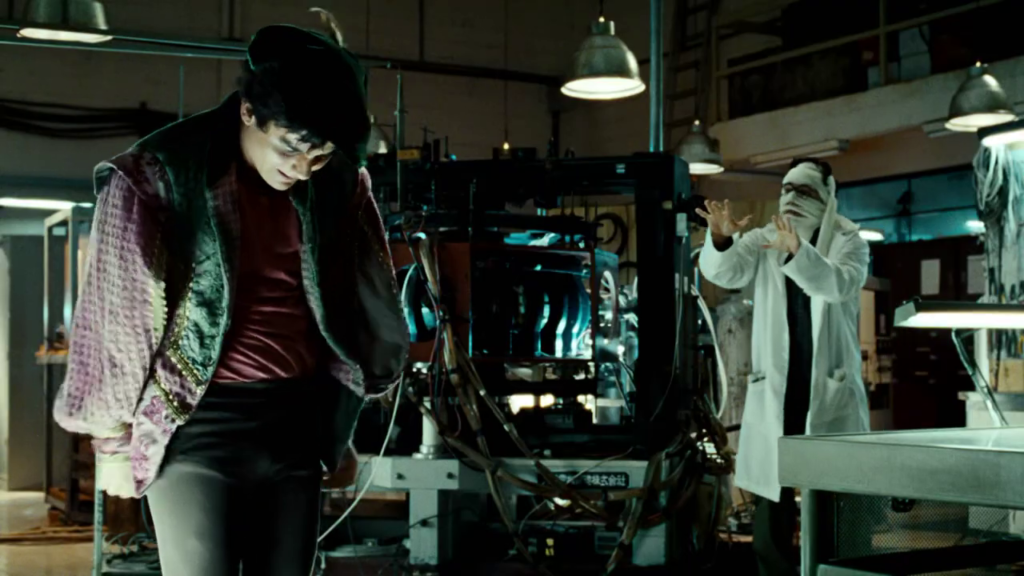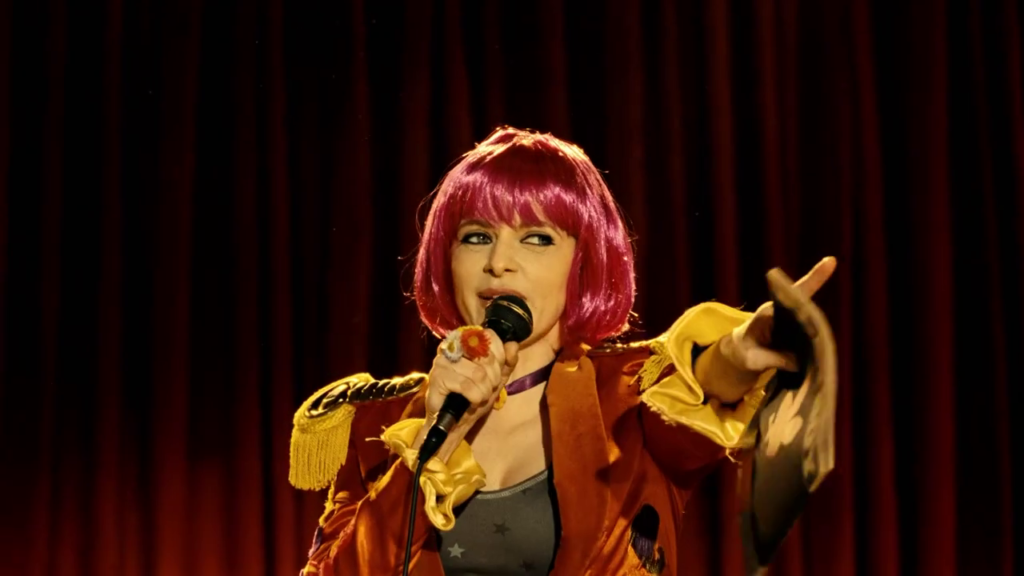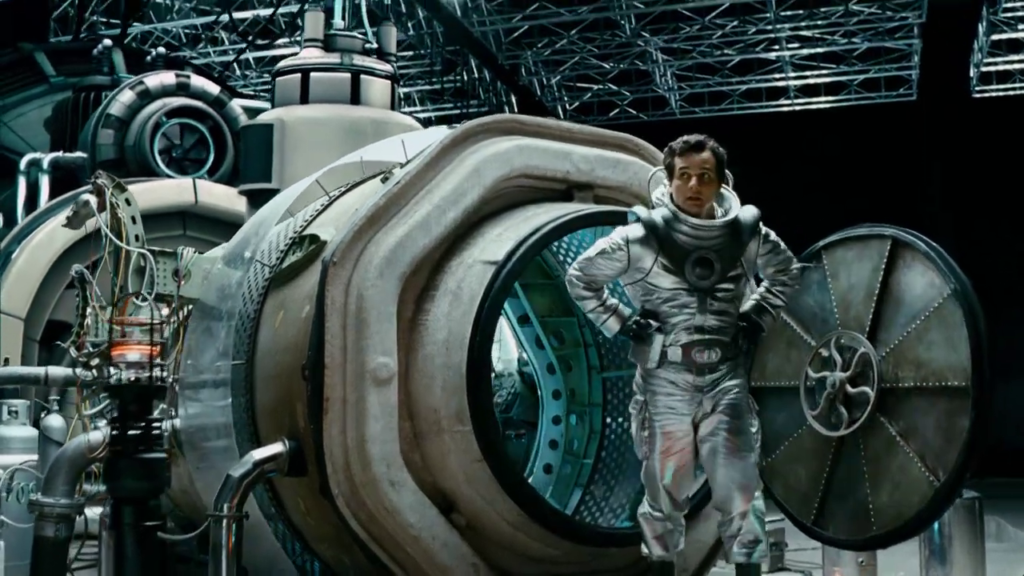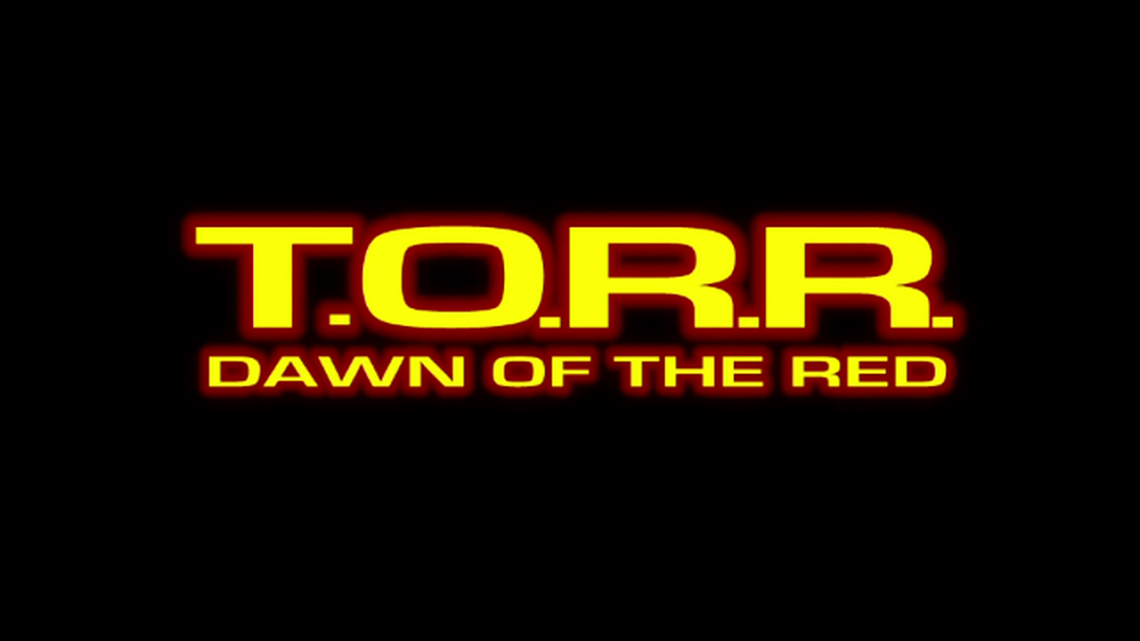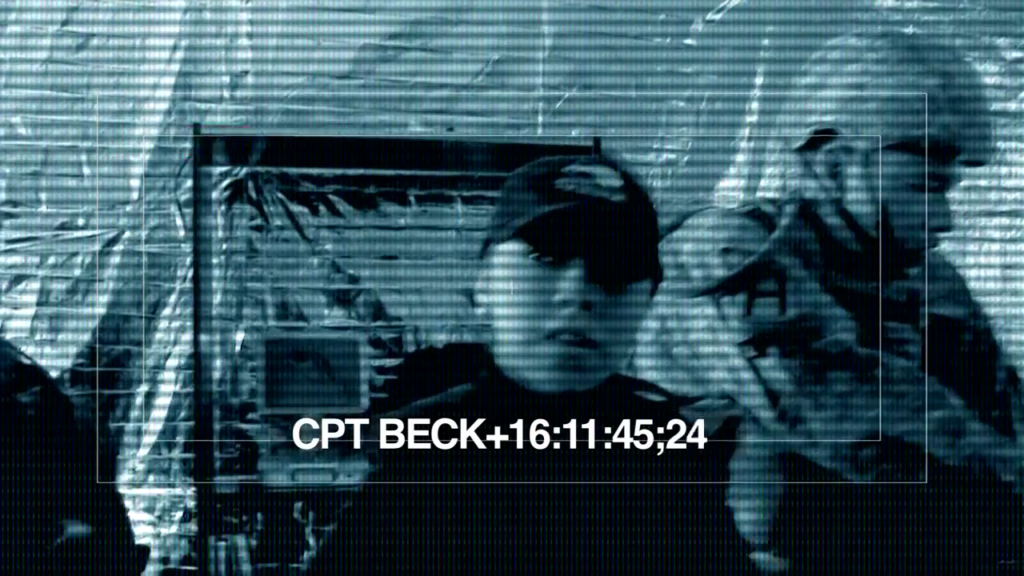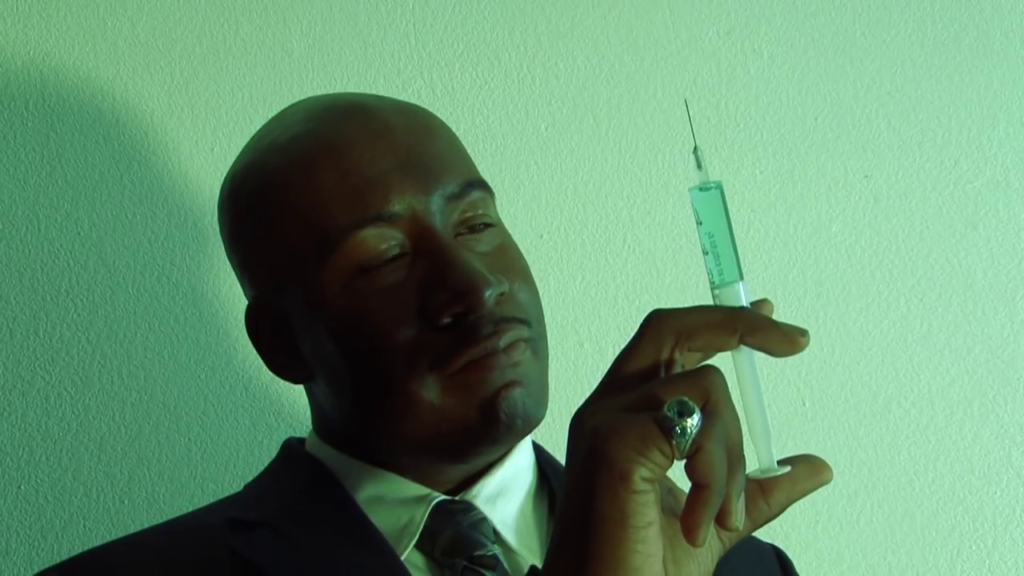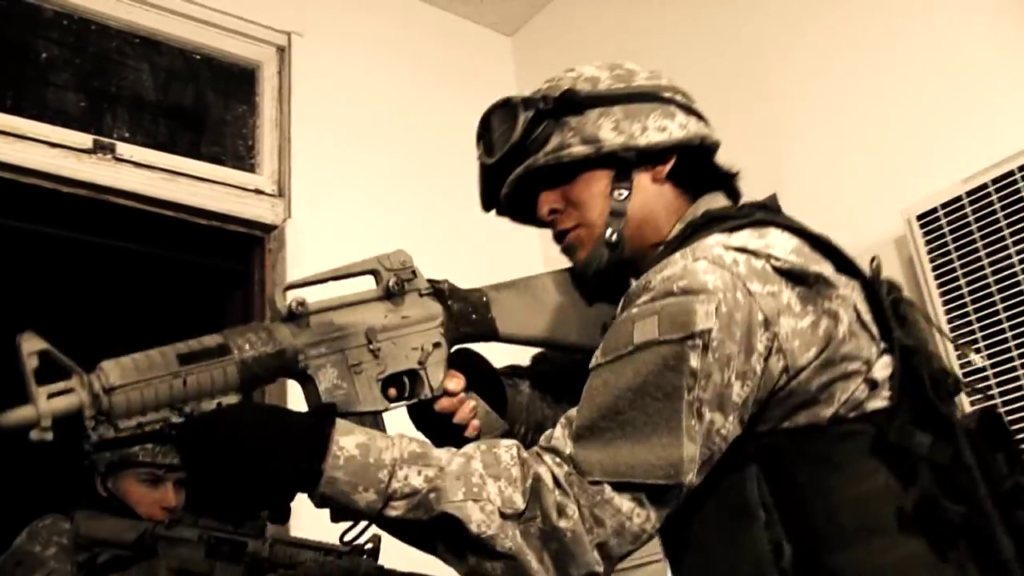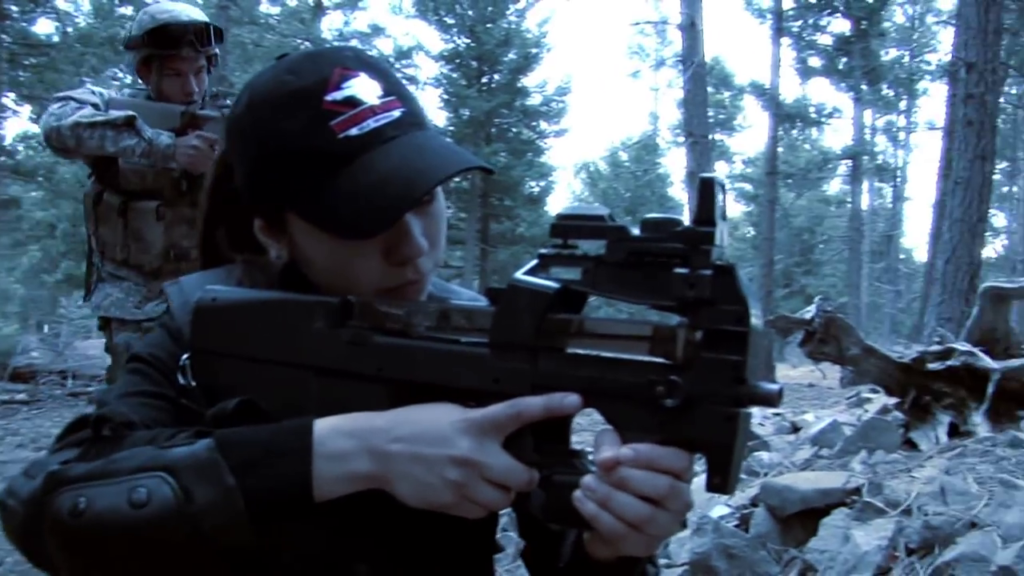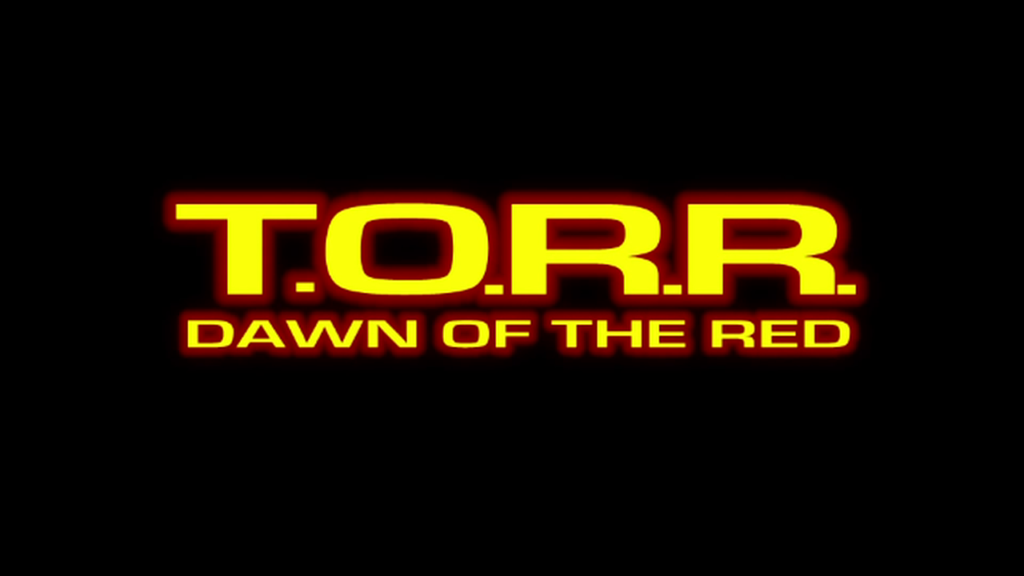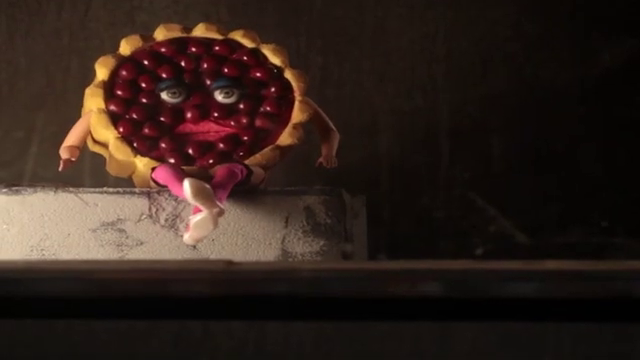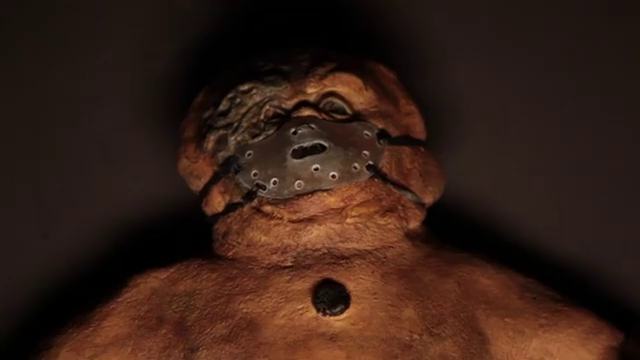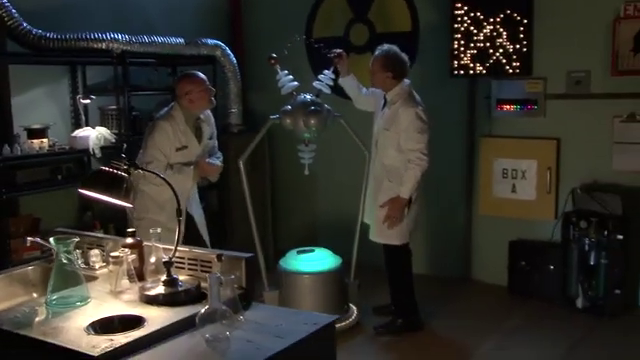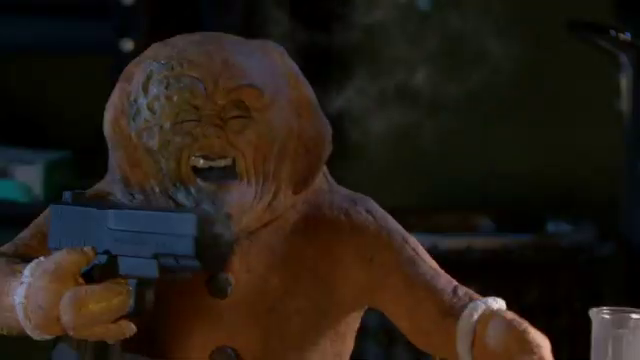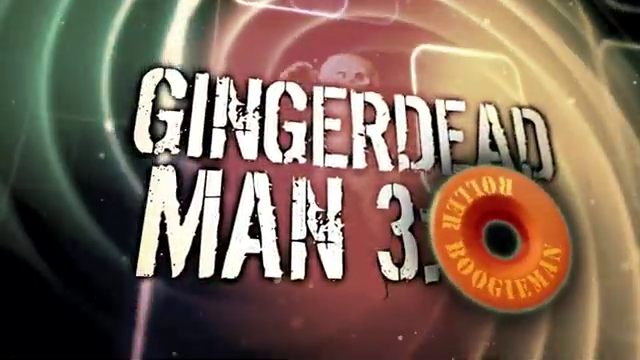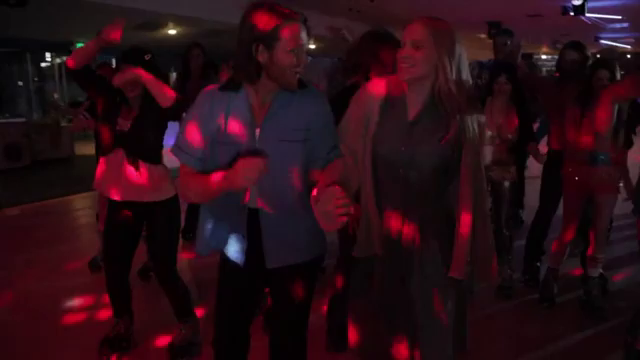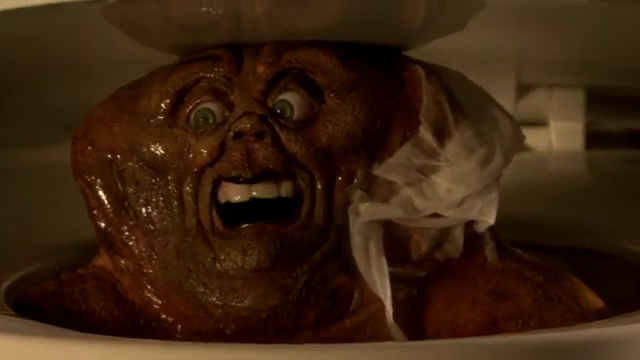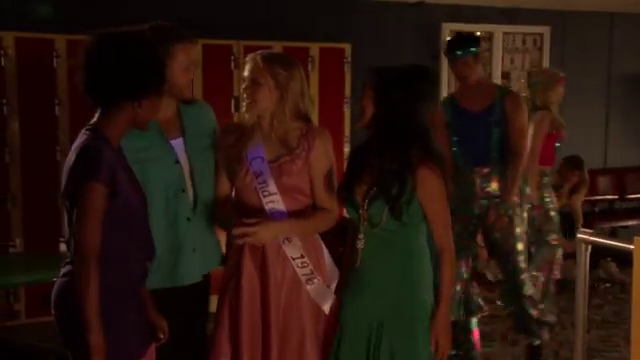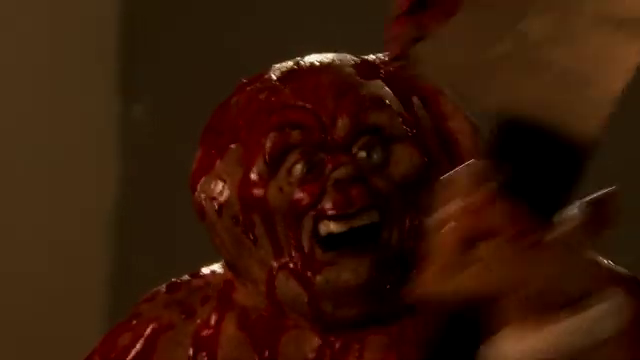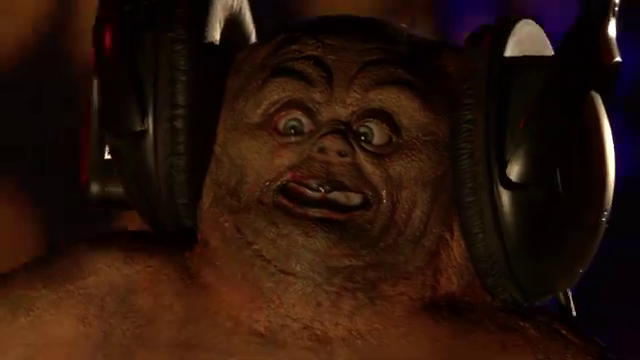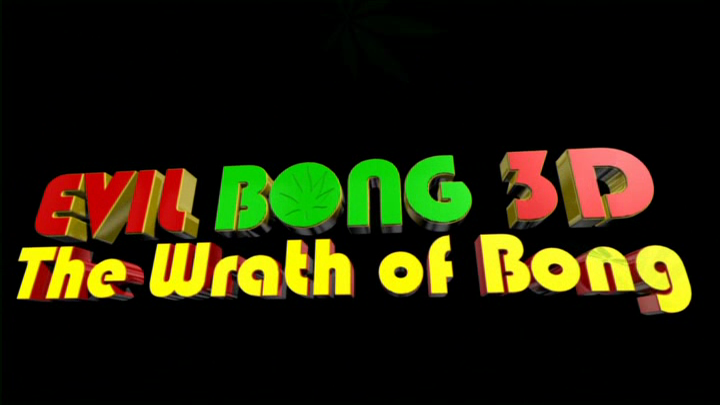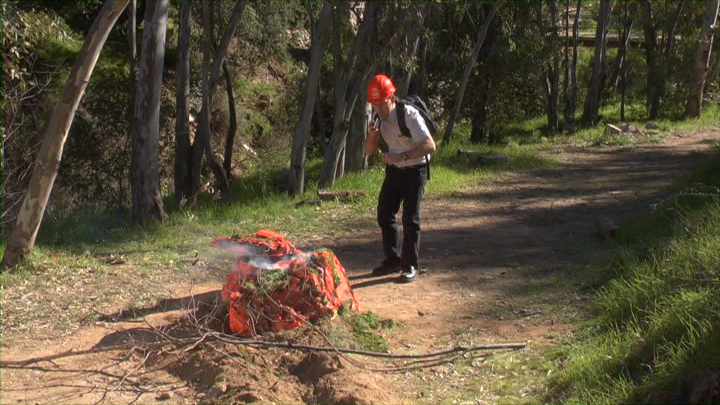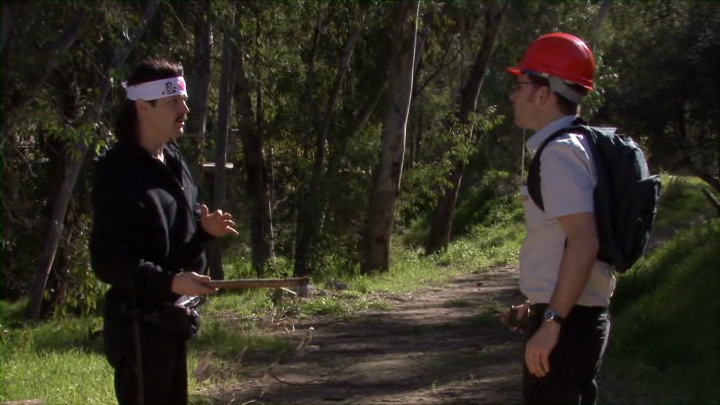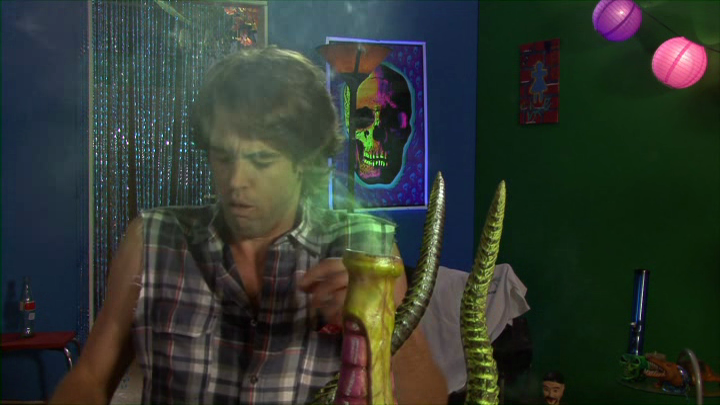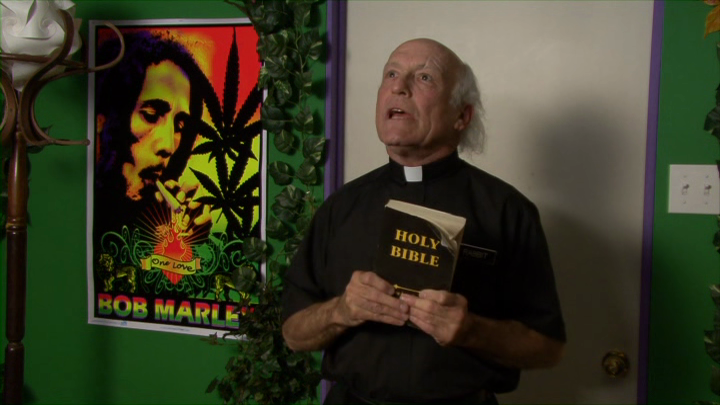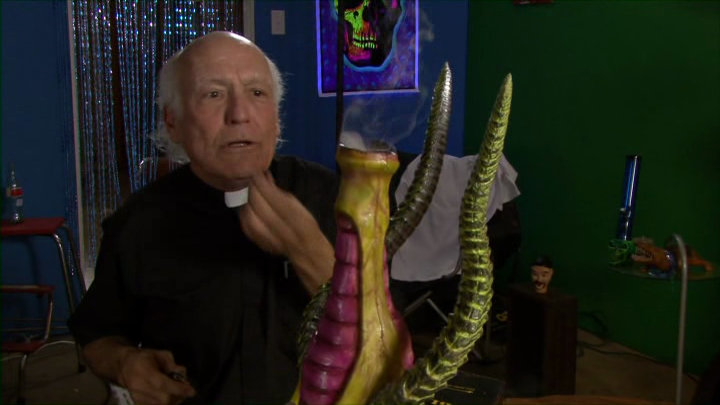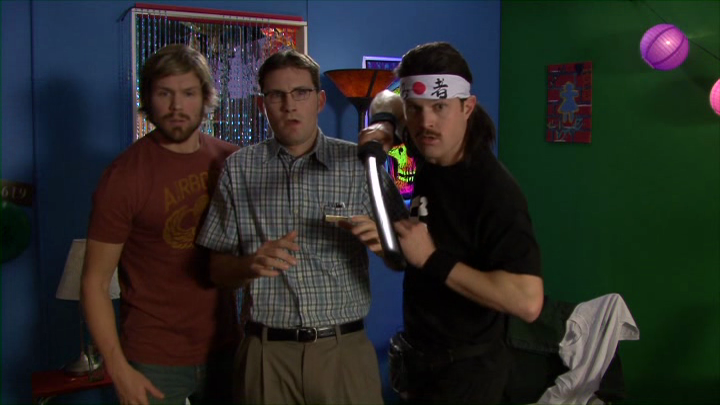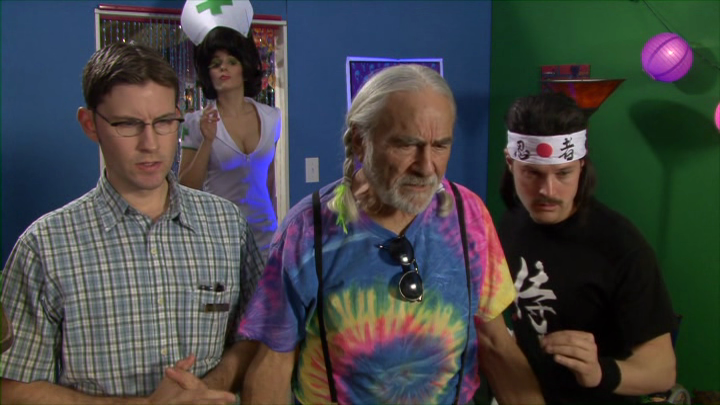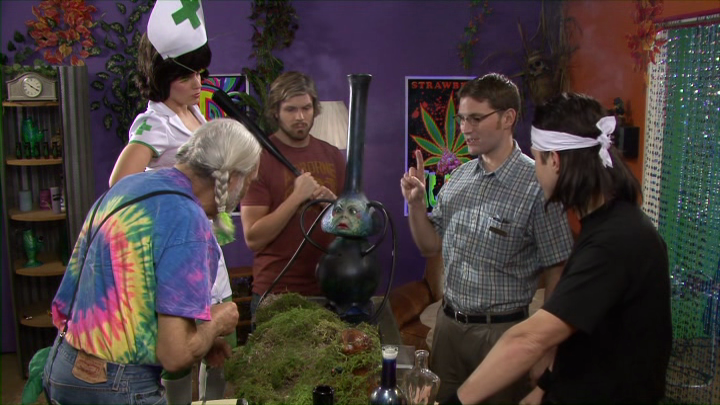-
#643 – Eva (2011)
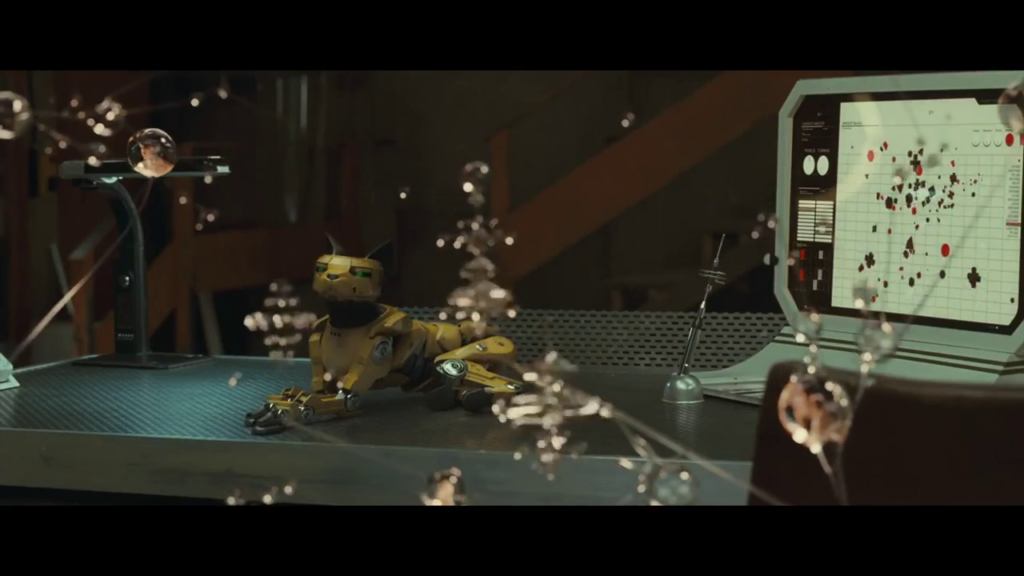
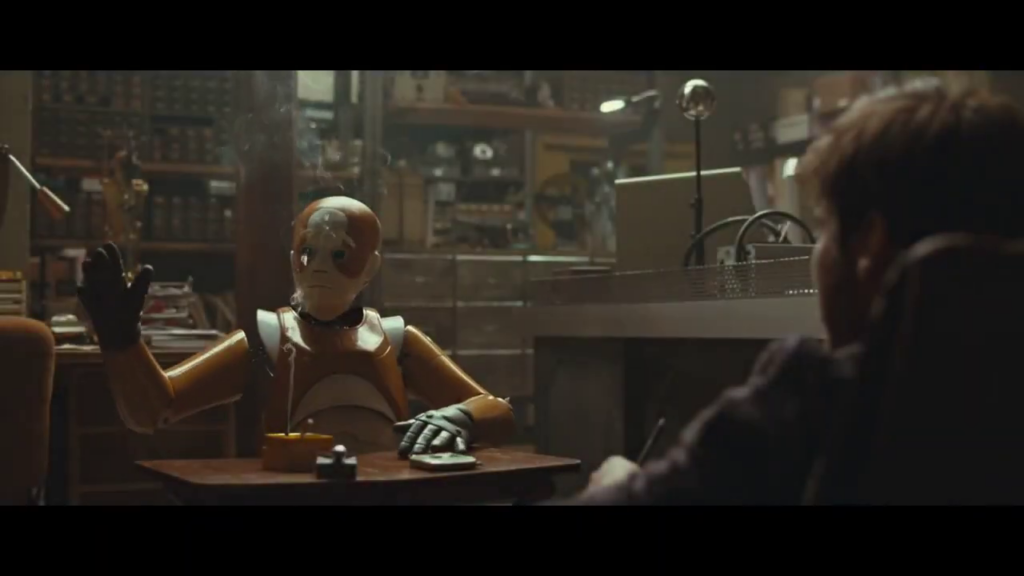
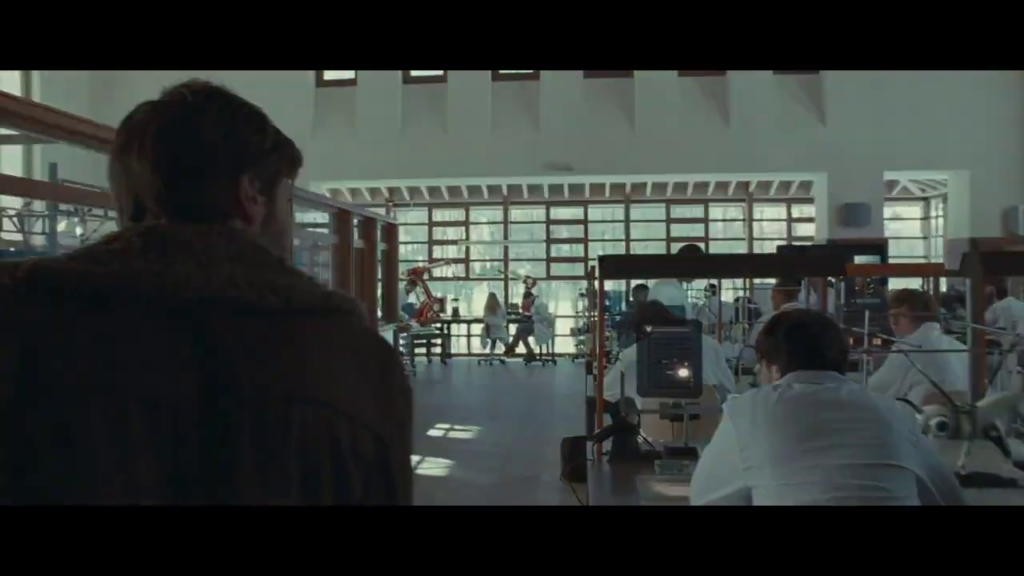
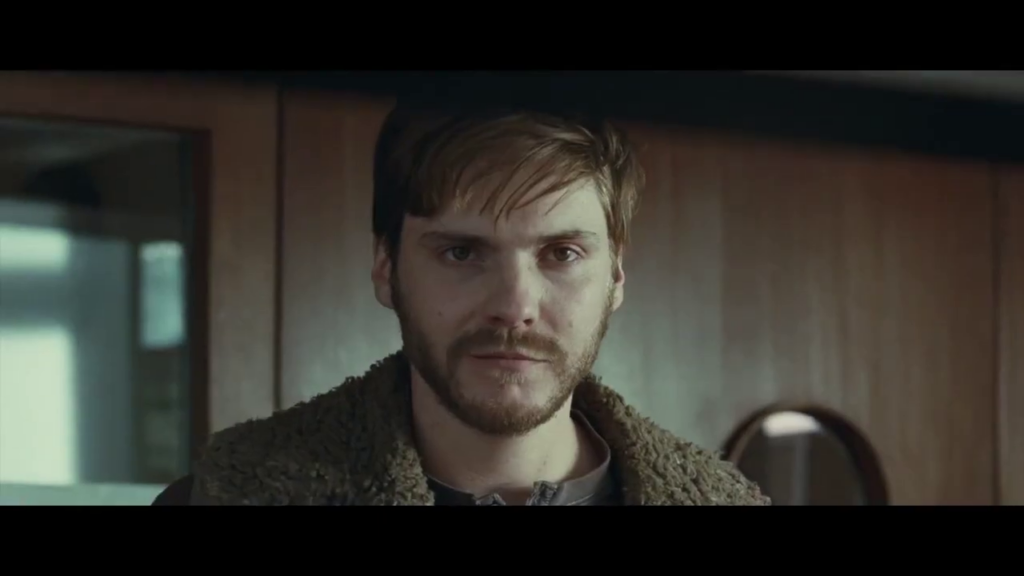
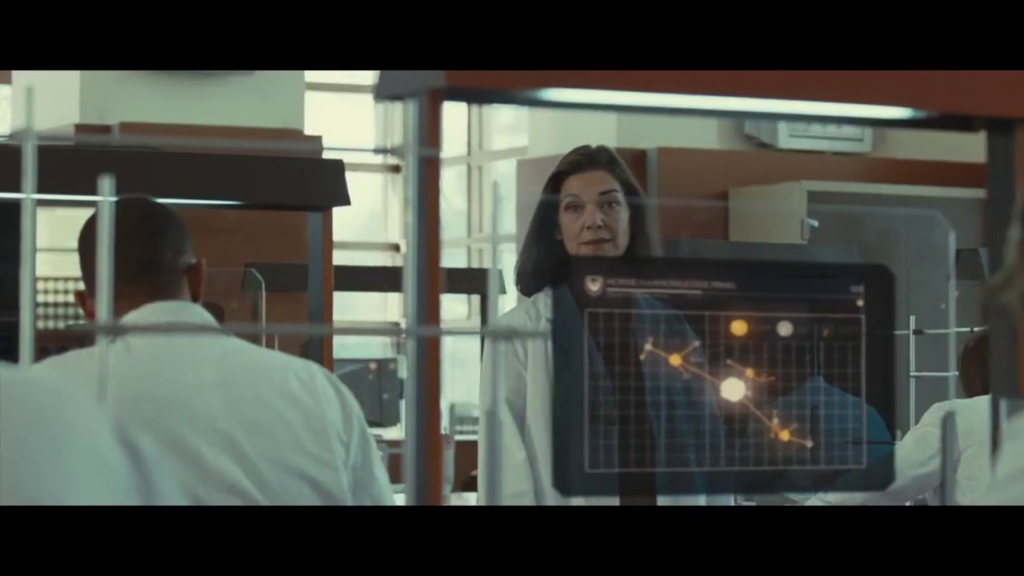
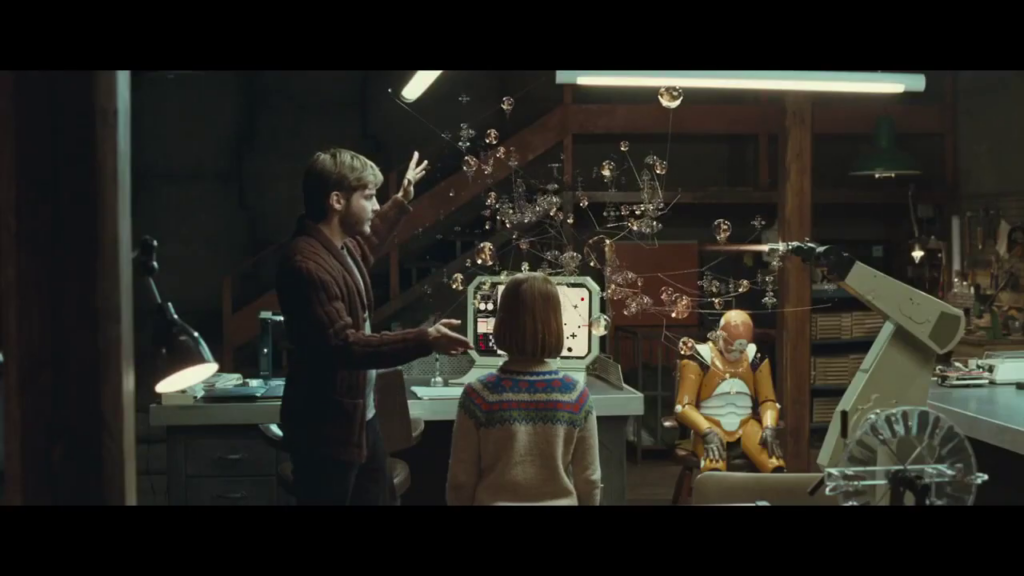
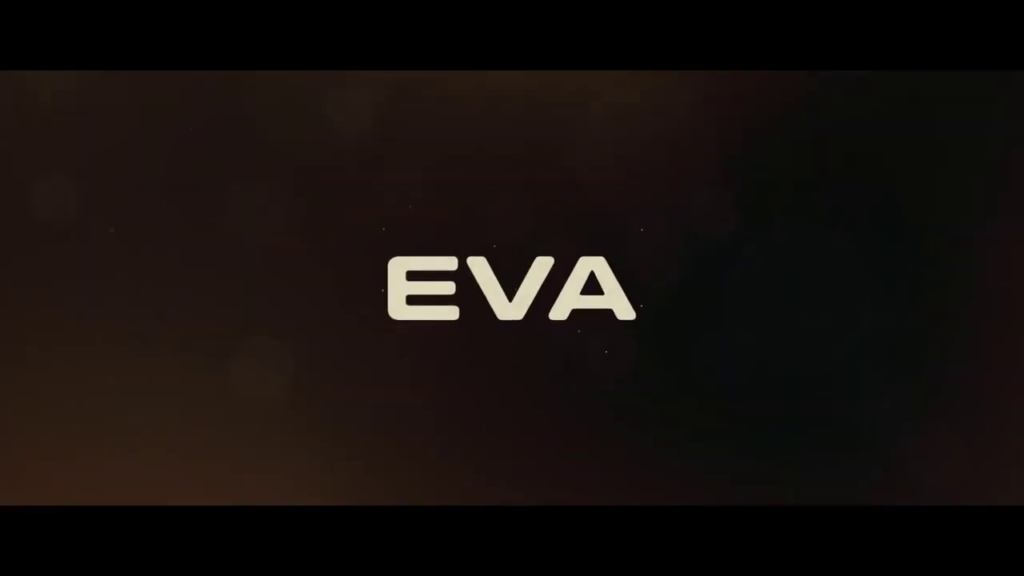
Eva (2011)
Film review #643
Director: Kike Maíllo
SYNOPSIS: Alex returns to his hometown after ten years when he is commissioned to finish building a robotic child with emotions that he abandoned ten years earlier. He chooses to base this child on Eva, a young girl who is the daughter of his Brother and former girlfriend.
THOUGHTS/ANALYSIS: Eva is a 2011 sci-fi film. Set in 2043, Alex returns to his hometown as he is commissioned to finish a child-like robot with emotional intelligence, which he abandoned some ten years ago. Looking for a child to base the robot’s emotions on, he comes across Eva, who later turns out be the child of his Brother and former lover. The core of the story is a recognisable sci-fi one, a commentary on humanity, robots and the like. There’s nothing too special here that hasn’t been said by other films. It’s simple enough to follow, but that’s mostly because there’s not a lot going on. We’re introduced to a world where robots are commonplace, but we don’t really get a sense of how this has really effected or transformed society. The film is more focused on the individual characters though, so that’s excusable to a point.
Given that the film does centre around the characters, the biggest flaw in the film is that there’s little to no character establishment or development. Alex is essentially a mystery: we know he left for ten years after developing robots, but nothing else. We don’t know his stance on anything, what has been happening in his life, or anything of the sort. As such, it’s difficult to connect the events of the film to how it affects his character because there’s very little to affect. Lana, Eva’s Mother, is essentially that: she only exists as a Mother and love interest, and suffers severely from her personality being that she is a woman, which shouldn’t really be a thing in 2011. The performances are decent, but it often feels like they’re given very little to work with. The effects and CG models are fine for the time, but the main robot lacks the intricate lifelike movement and expression that would make them more significant. There just seems very little at stake throughout the whole film: it doesn’t really matter whether Alex creates this robot or not; nothing really depends on it, he’s just doing it because…? also, it turns out that [SPOILER] Eva is actually an android that can basically do everything he is trying to do anyway, being built by his Brother and Wife beforehand. The decision he takes to shut Eva down because she can apparently be dangerous just doesn’t seem justified either: she loses her temper, but it just doesn’t seem like it’s much different than a typical child, so essentially killing her for doing it is a very strange thing to end on. It’s nicely shot and produced, but there’s a void at the heart of the film that fails to generate anything substantive, or make an emotional point due to some very poor character development. Reviews for Eva generally aren’t too bad, but honestly I can’t agree: the good elements fall away due to a lack of cohesion in the screenplay and characters, and there’s many films that broach the same subject that do it better.
-
#610 – Battle: Los Angeles (2011)
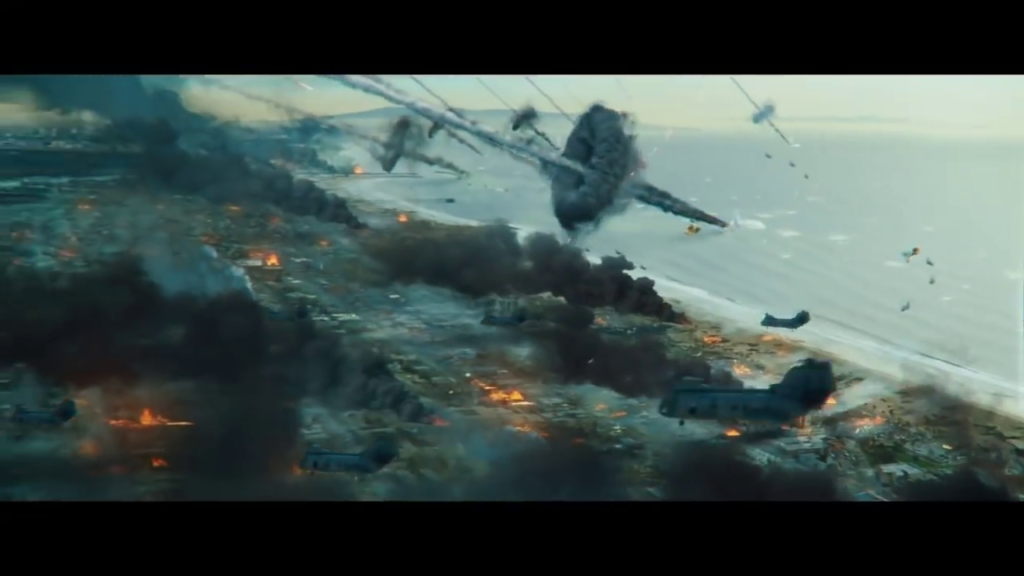
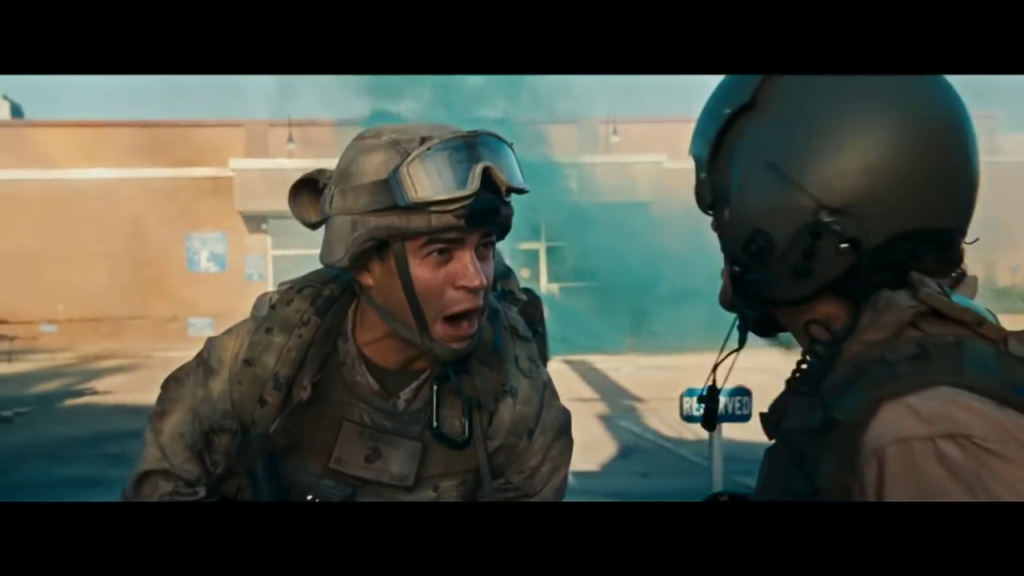
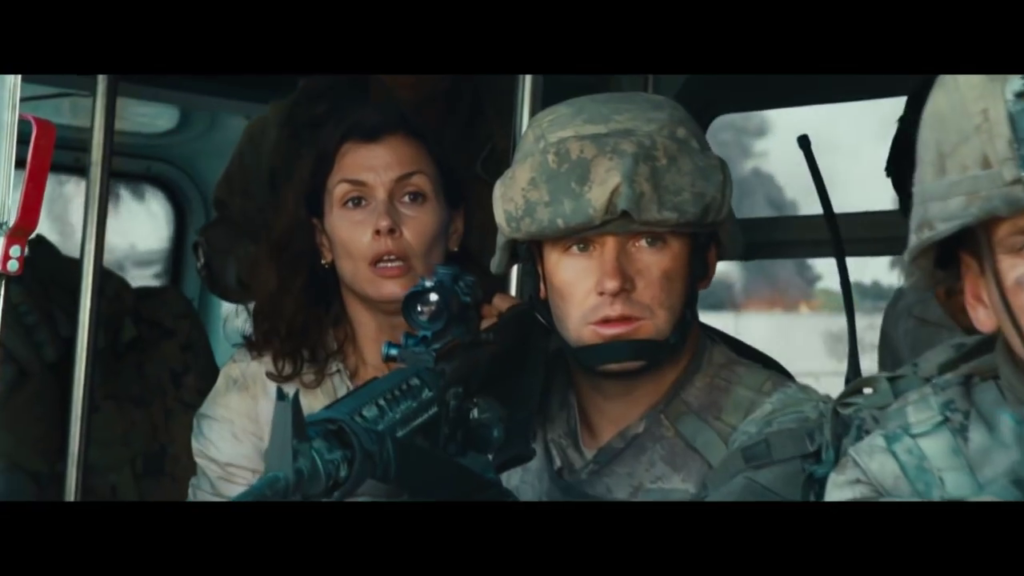
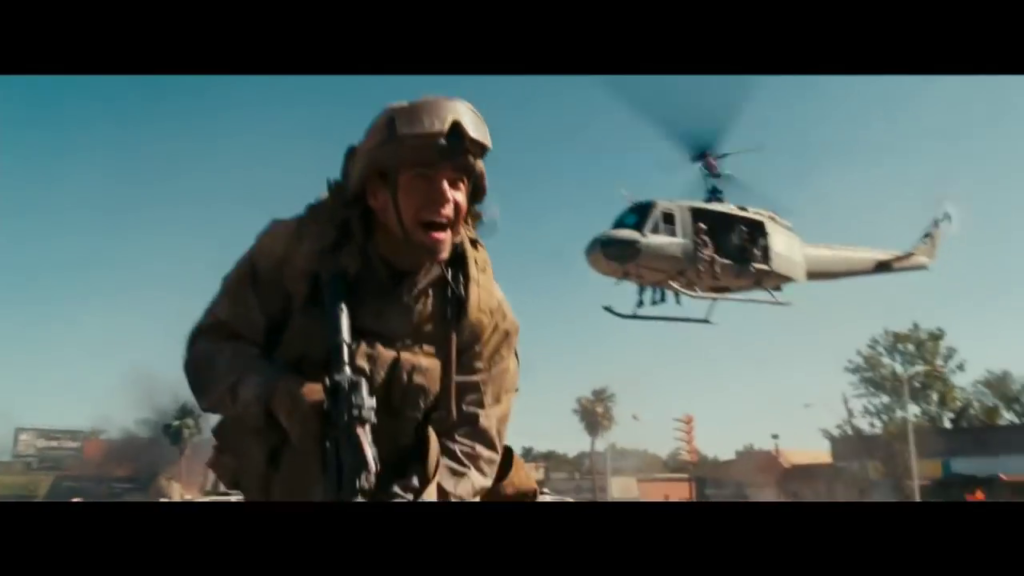
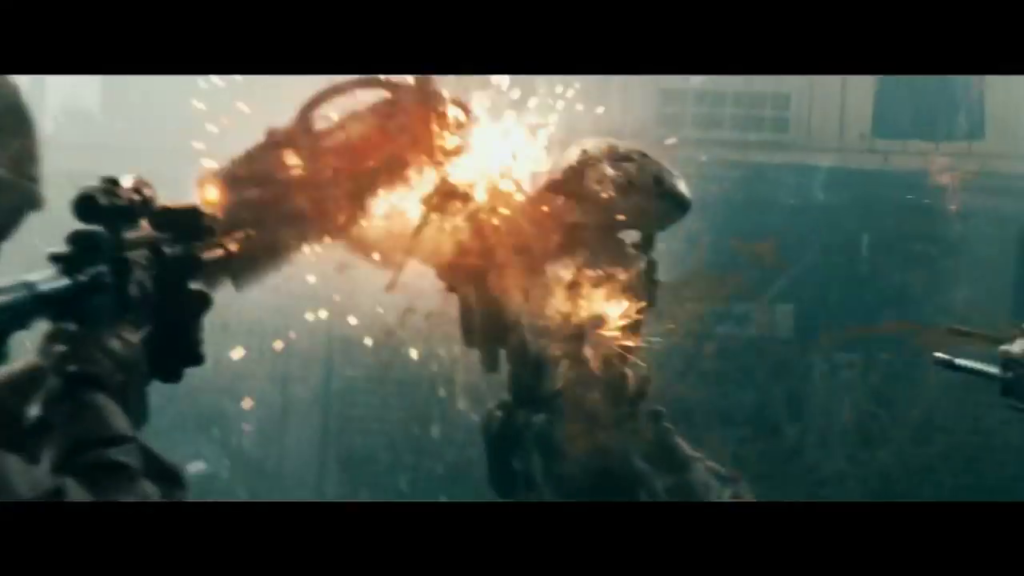
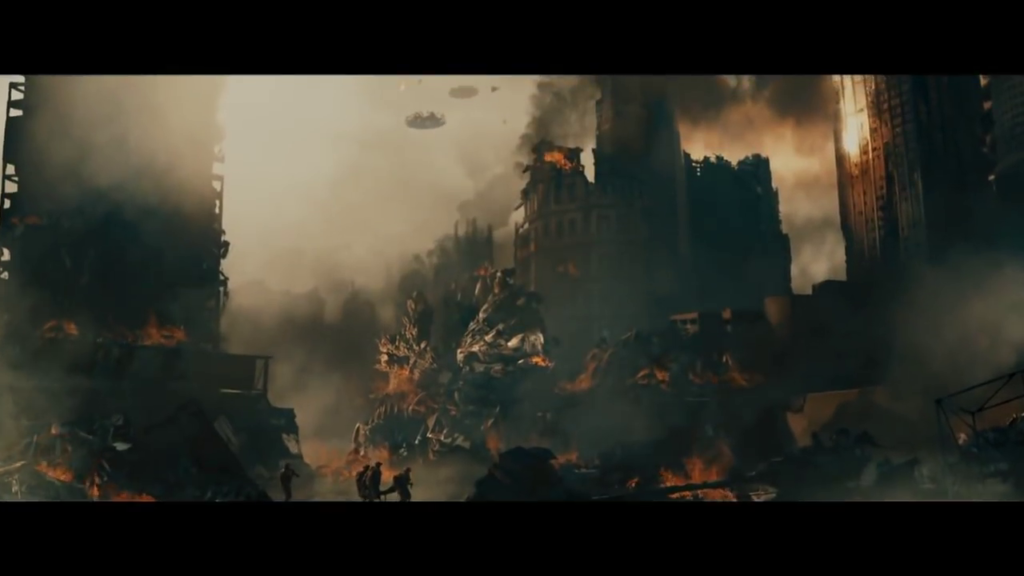
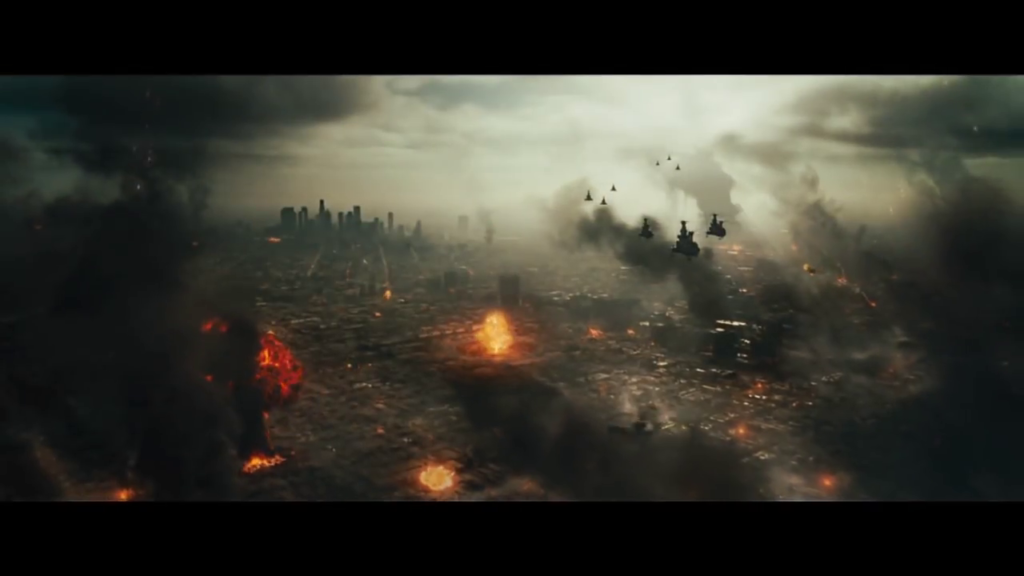
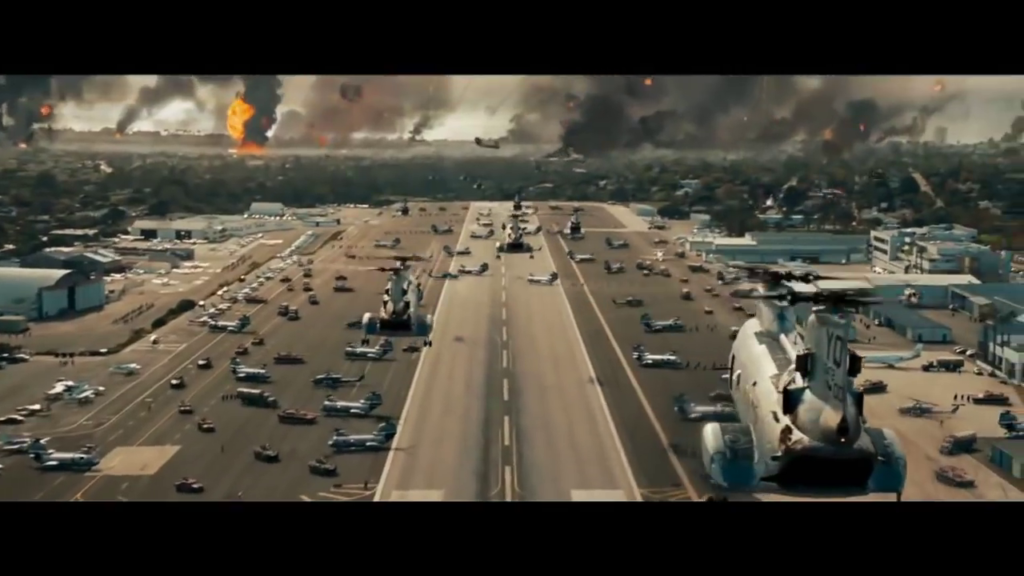
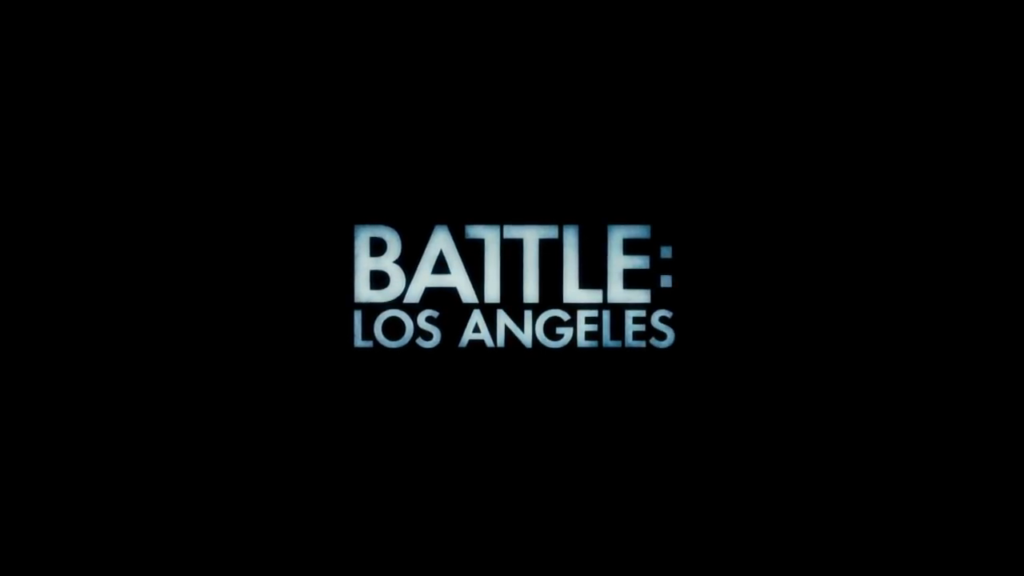
Battle: Los Angeles (2011)
Film review #610
Director: Jonathan Liebesman
SYNOPSIS: Strange meteors begin falling from space and landing in the ocean around major coastal cities. It turns out that are not meteors at all, but aliens intent on the invasion of Earth. A marine unit is assigned to the evacuation of civilians, and finds itself heading onto the frontlines in an attempt to bring some civilians home before the area is bombed…
THOUGHTS/ANALYSIS: Battle: Los Angeles is a 2011 sci-fi military alien invasion film. Starring Aaron Eckhart as Staff Sargent Michael Nantz, he is forced into a unit before his retirement to help evacuate civilians in Los Angeles, as it turns out a meteor shower that has dropped meteors off the shore of coastal cities around the world is actually the start of an alien invasion. Focusing on Nantz and the military platoon he is assigned to, the film feels like Black Hawk Down with an alien invasion plot, with the aim of creating that sense of the viewer being on the ground amidst the thick of the action. It does this with the low camera angles and close ups that put you on the same level and right beside the characters, to generate that kind of adrenaline and urgency that the situation demands. At first, it definitely feels disorienting as the camera shakes about and you can’t get an establishing shot to position yourself, but you do get somewhat used to it. Also, the film does seem to pull back from this technique in the bigger action scenes to use more typical shots and compositions, whether that’s because of the bigger scale of the aliens, or the lack of expertise to pull off the more advanced scenes is difficult to say. Regardless, the overall story is very much a typical alien invasion story in the typical Los Angeles setting, which hampers the film’s ability to offer too many surprises.
At the beginning of the film, we are briefly introduced to the marines that make up the squad, their families etc., but it’s all done very quickly, and we don’t get much of a sense of distinguishing many of the characters. However, it’s not too important to know their backstories when they’re in the heat of combat, it’s just that it would be nice to be able to distinguish them a little to stop those scenes becoming very cluttered. Aaron Eckhart is a commanding and likable lead, with the typical baggage his character as a combat veteran has. The rest of the characters, as mentioned, are briefly introduced at the start, or throughout, so we have a basic idea of who they are, but their backgrounds don’t matter too much once you get into the combat. The film also keeps you guessing which characters are going to make it, although the death’s of some of them are fairly obvious. The aliens themselves we don’t see too much of, but they are weird and ‘alien’ enough to offer something a little different. Their background and motivations aren’t explored too much, but again, that’s part of the film being from the soldier’s perspectives, where you don’t need to worry about anything other than killing your enemy.
We get the usual big scenes of destruction that you would expect, but there’s nothing much to distinguish it from all the over alien invasion films that are set in an American city. The film was actually shot in Louisiana with sets of Los Angeles reconstructed on location, so we obviously don’t see too much of the city or it’s landmarks. Overall, Battle: Los Angeles is a fairly entertaining one-time watch, but doesn’t really distinguish itself from other alien invasion films set in a major U.S. city. The perspective from the military unit is jarring at first, but soon finds its rhythm. It’s got enough to make it a complete experience, but there’s not really much that will stay with you.
-
#600 – In Time (2011)
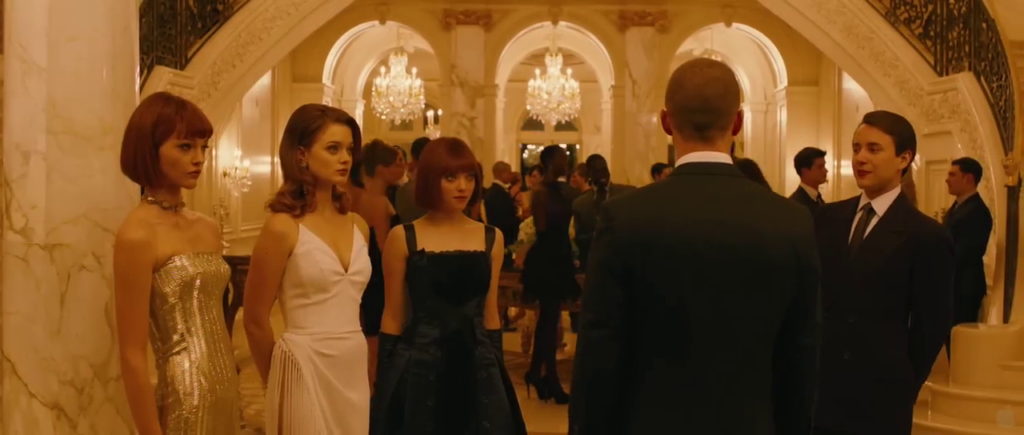
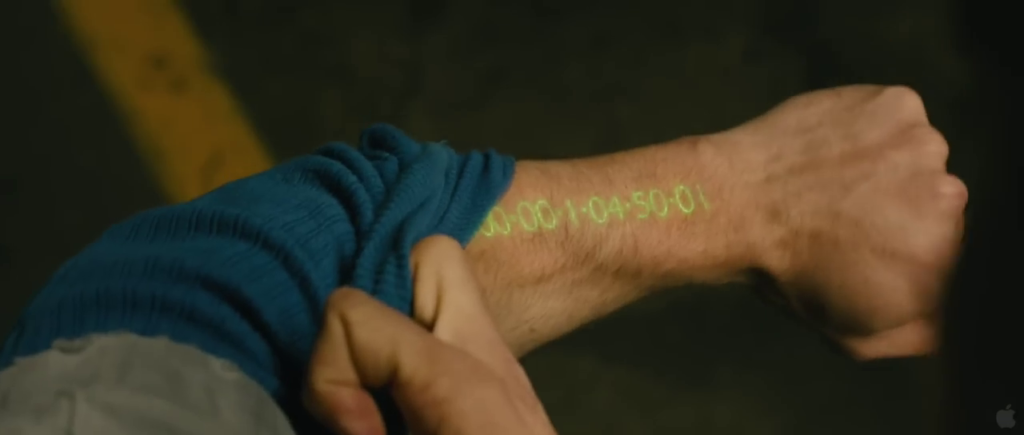
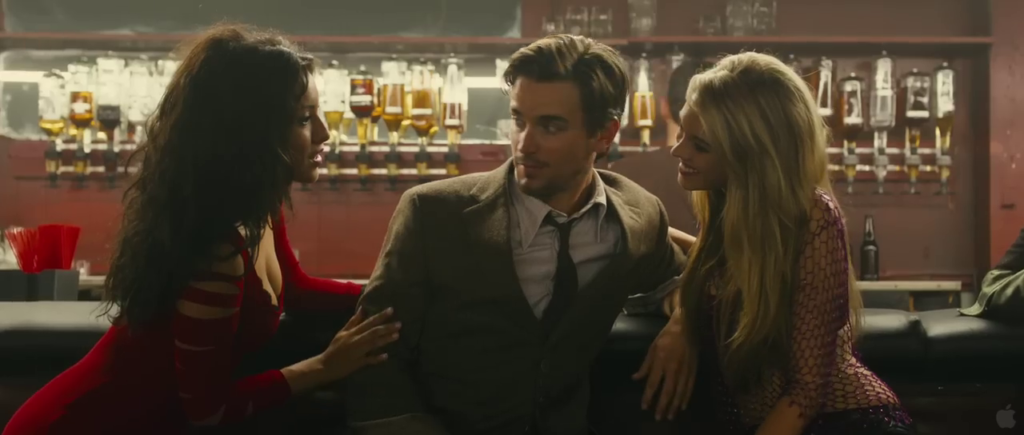
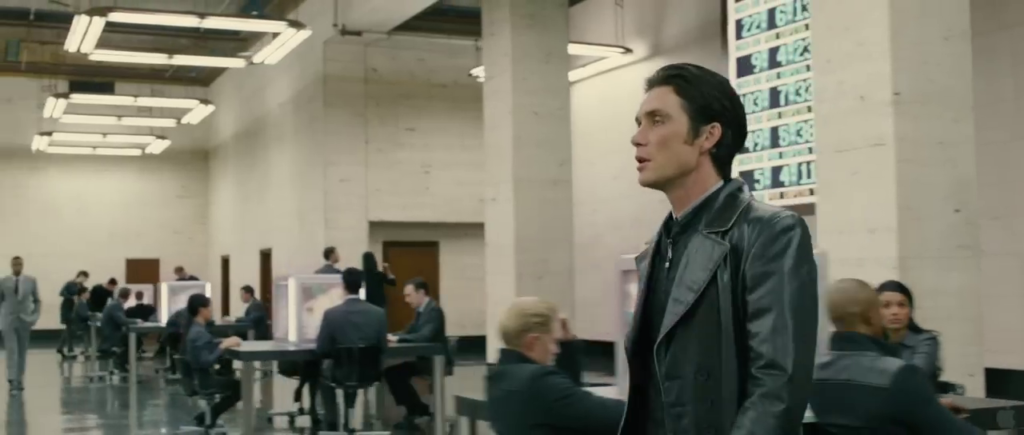
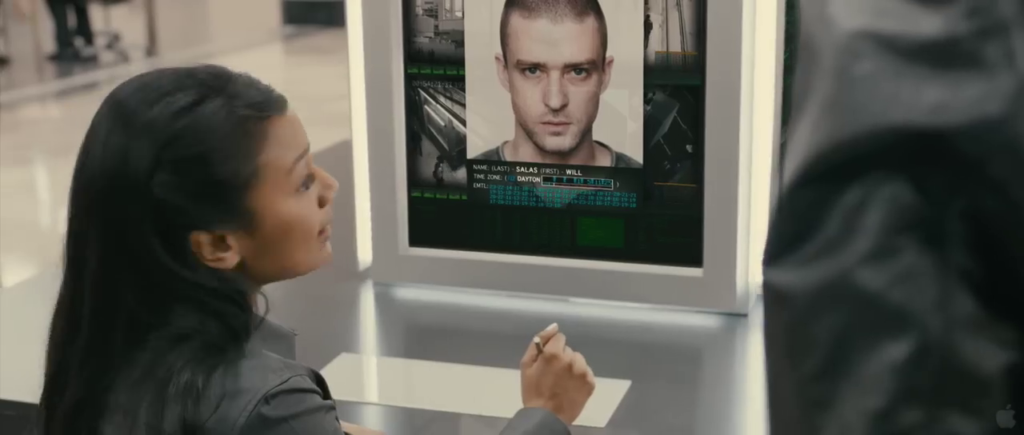
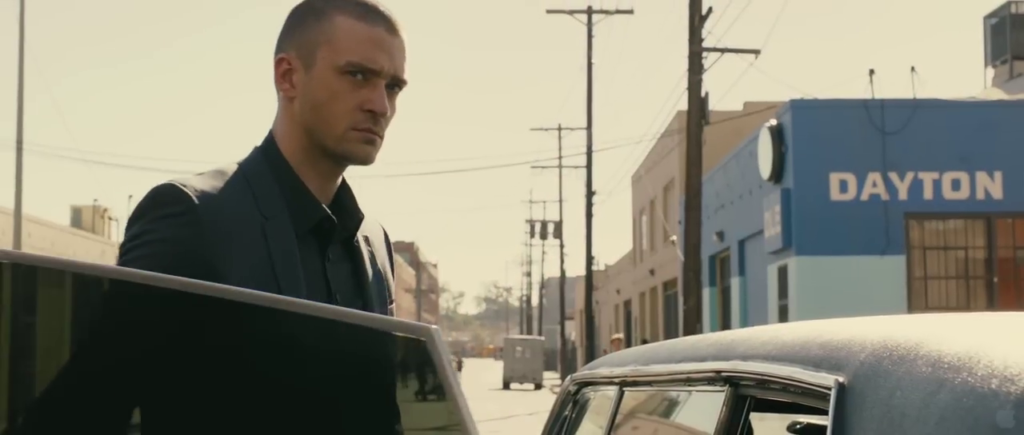
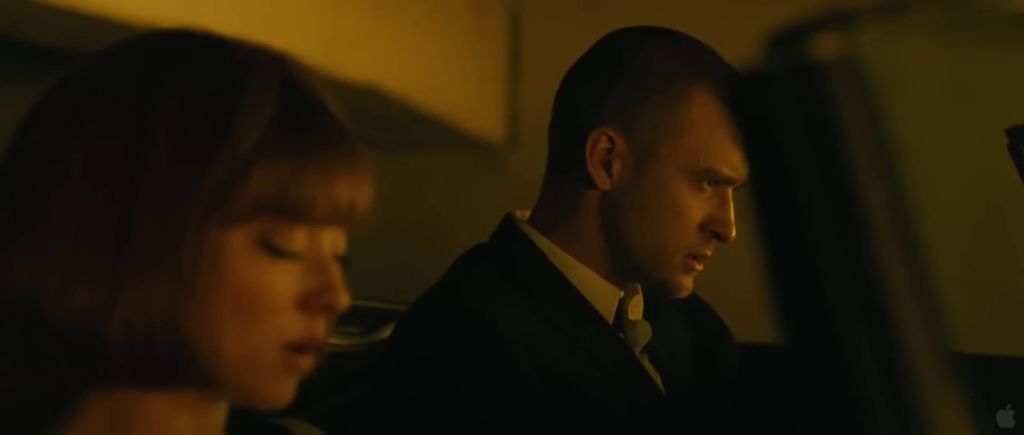
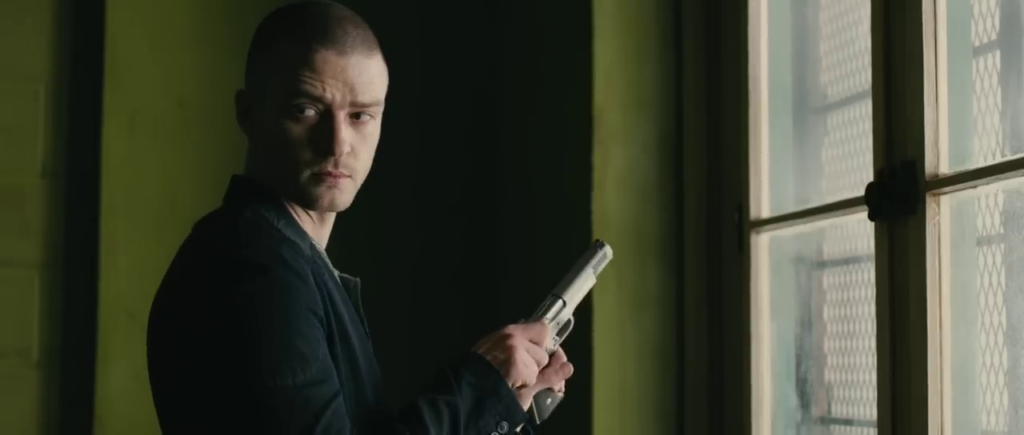
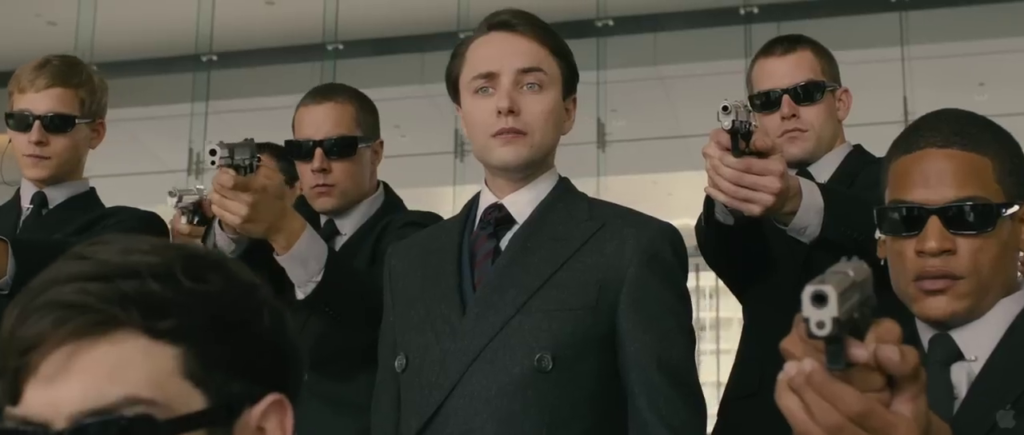
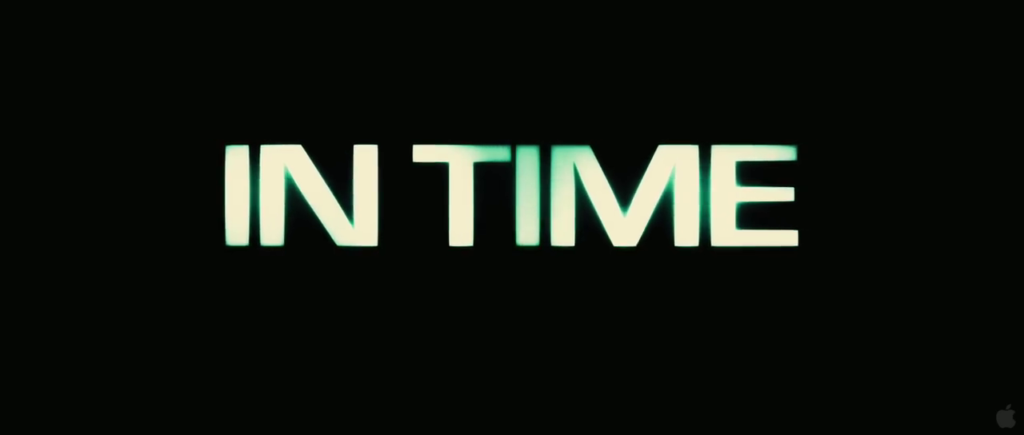
In Time (2011)
Film review #600
Director: Andrew Niccol
SYNOPSIS: In the future, time is the only currency: people stop aging at the age of twenty five, and after, must work to earn time on their lives, as well as using time to pay for everything else. Will Salas works in the ghetto, earning just enough to live day-to-day, when he meets a man at a bar who has over a century left on his life. The man, who has apparently been living over a hundred years, has grown tiring of living, and transfers all his remaining time to Will. Faring that having so much time could upset the balance of the economy, Will becomes hunted by Timekeepers whose job it is to restore order, while Will decides to use his new found time to fleece the system for everything it has…
THOUGHTS/ANALYSIS: In Time is a 2011 sci-fi film. Set in the future of 2169, time has become the only currency, where people stop aging at 25, and must get extra time on their lives by working for it, but also must pay for everything with that same time as well. It’s a fairly interesting set-up, although I don’t think overly novel. The downfall of the film is that it in no way explores the concept it leads with. At the start, we get a scene between main character Will Salas and who we are lead to believe is his wife, but turns out to be in fact his Mother, because everyone stops aging at the age of twenty-five, you would have no idea how old someone was. This seems like some thing that has potential to be explored, but it barely gets a mention. Another big part of the film is the portrayal of the gap between those who have to earn time day-by-day to keep from dropping dead, and those who have hundreds of years on their clock so they can practically live forever, thus creating a dystopia of inequality. The trouble here is, this doesn’t really seem any different than the systems of inequality we have today. Obviously science-fiction works best when it serves as a reflection of contemporary society in some way, but because the film’s concept is not developed or intertwined more closely with the core story, it becomes fairly irrelevant. We are often told about this system of inequality, and how people in the ghetto are fighting to survive, but every scene there is fairly calm and quiet, whereas you would expect people to be constantly fighting each other for seconds or minutes, particularly if they were at the end of their time. Therein lies the problem: the film tells you about the world, but what is shown rarely matches up to that, thus the film really tries to force feed it’s world to you, rather than letting viewers immerse themselves in it to explore for themselves. There’s also the fact that the future is hardly any different than our present, save for the time-based currency: all the cars, buildings etc. are things you would find in any city, and again, you’re just not immersed in this setting.
The plot proper concerns Will Salas (Justin Timberlake), a worker in the ghetto who meets a man from the rich zone with over a hundred years on his clock, who has grown tired of living after over a century. He gives Will all his time while he is sleeping, leaving just enough to throw himself of a bridge when it runs out. When Will’s mum dies as well from running out of time, Will decides to use his newfound time to take everything from the rich. It’s a bit of a leap from Will just trying to survive to becoming a revolutionary, as we aren’t really given any idea about his backstory or anything, and it feels like there’s a bit of a gap between suffering a loss to deciding to tear down the whole system. Will buys his way into the rich zone, and with the help of Sylvia Weis (Amanda Seyfried), the daughter of a rich banker whom Will initially kidnaps, the two embark on a Bonnie and Clyde style set of raids and robberies to distribute time from the elite to the people of the ghetto, disrupting the time-base economy, all the while being pursued by the timekeepers, who enforce the system. Given that the aim given in the film is for Will to bring down the whole system, the film instead just focuses on a constant chase between Will and authorities, never advancing the story in any significant way. In fact, the end of the film just states that they can’t up-end the system, and seemingly ends with the pair on their way to rob another time bank and just do what the film already showed ad infinitum. There’s also a small plot point that hints about Will’s Dad being killed for doing the same thing that he is doing, but this is mentioned off-hand once or twice and never becomes relevant to anything, which makes you wonder why it is mentioned at all.
Overall, In Time offers an interesting set-up, but ultimately fails to do anything with it. We are left with a world very similar to our own, and one that is too similar and thus unengaging, as the film constantly avoids developing it with any detail, or exploring any implications from its core concept. The characters are fairly bland, and Justin Timberlake’s performance hasn’t improved since his role in the sci-fi film Southland Tales, which had the same problems there. Unresolved plotlines, a lack of direction, and an absence of depth leave the viewer with a film that’s simple enough to follow and a bit of style, but wholly lacking in substance and direction.
-
#569 – Paul (2011)
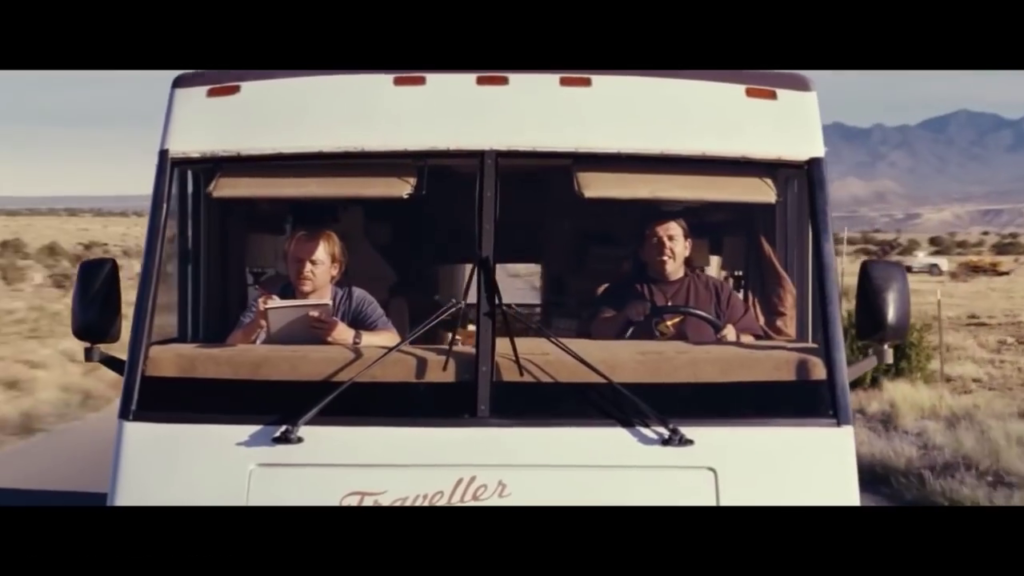
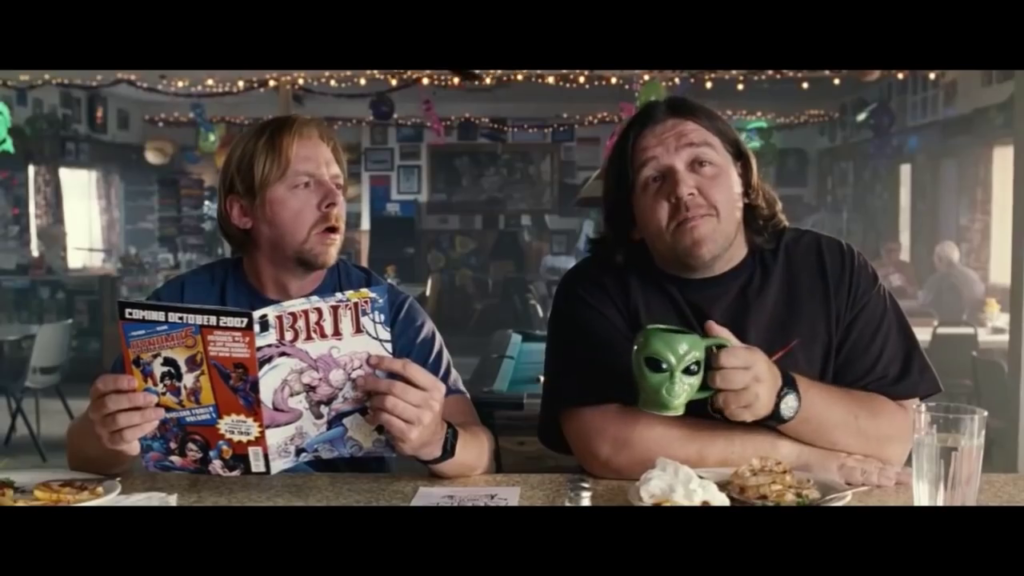
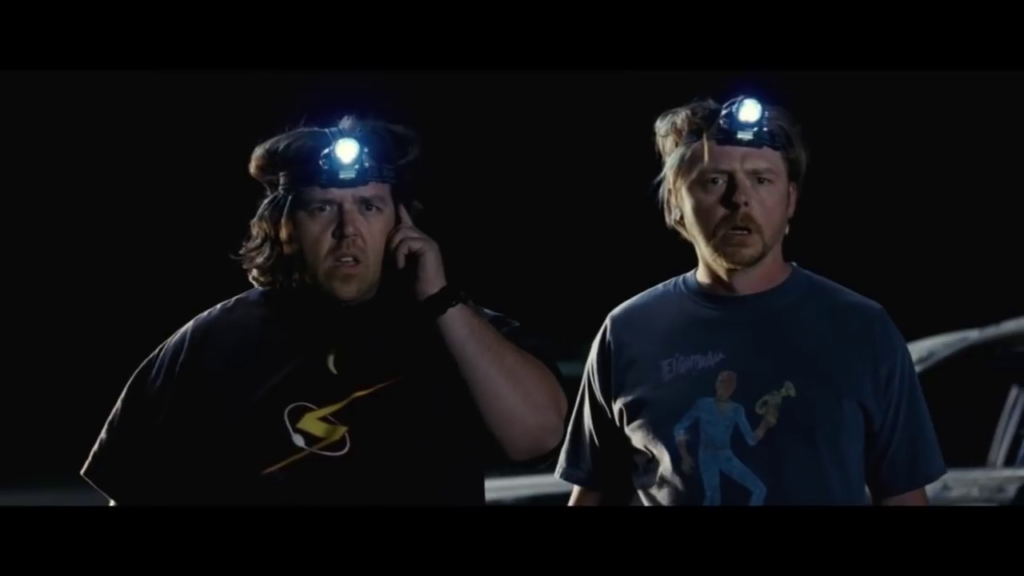
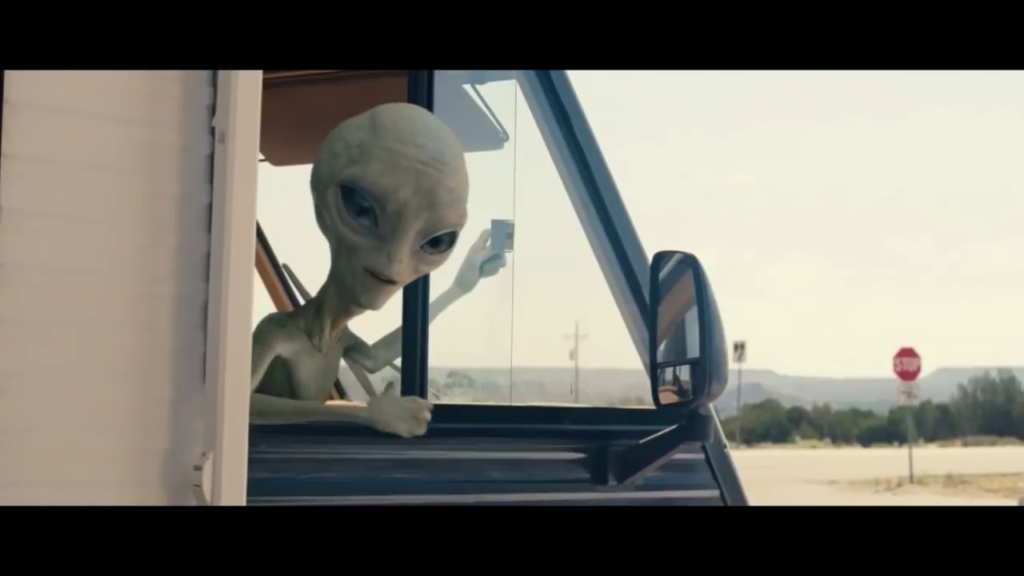
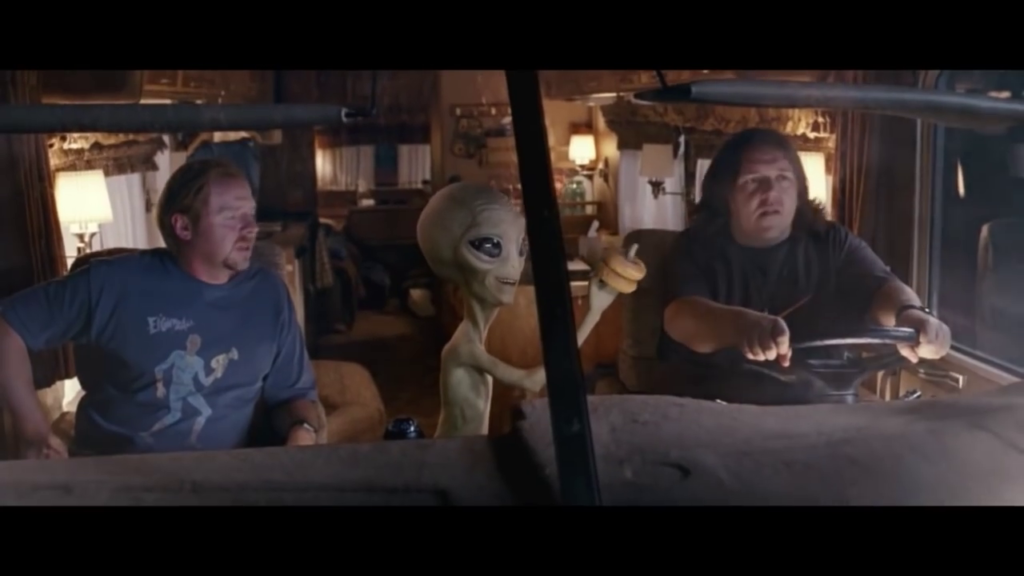
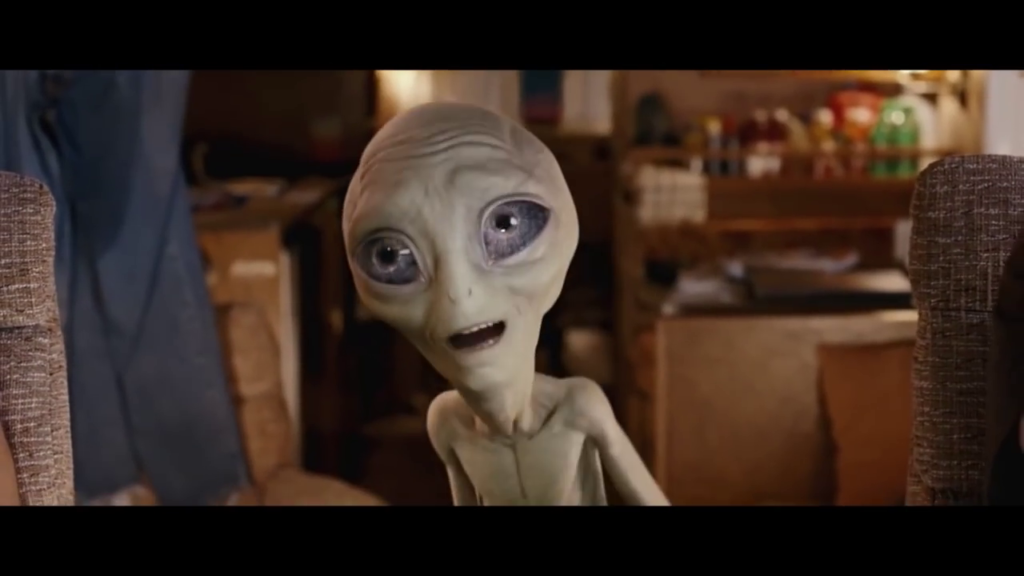
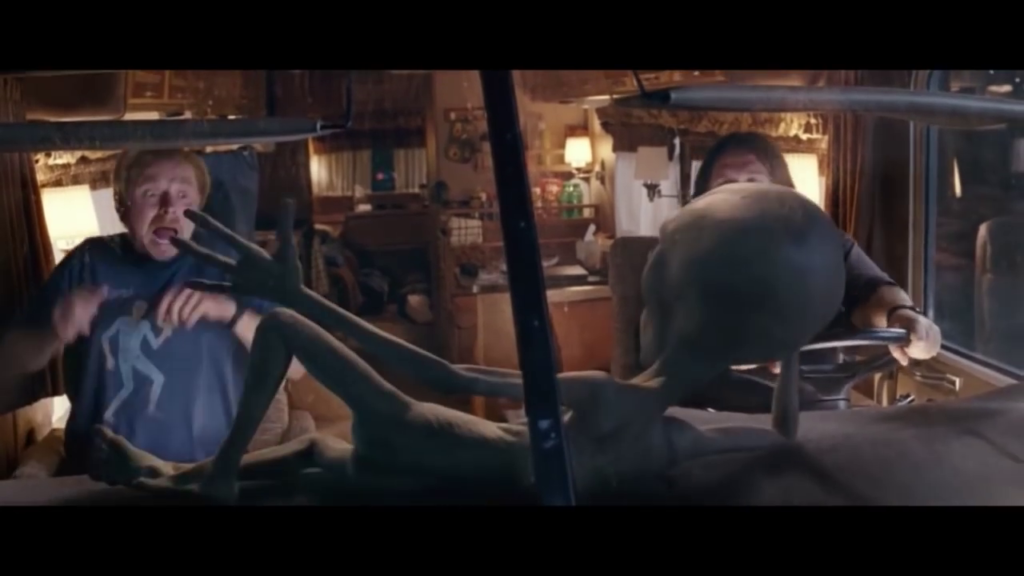
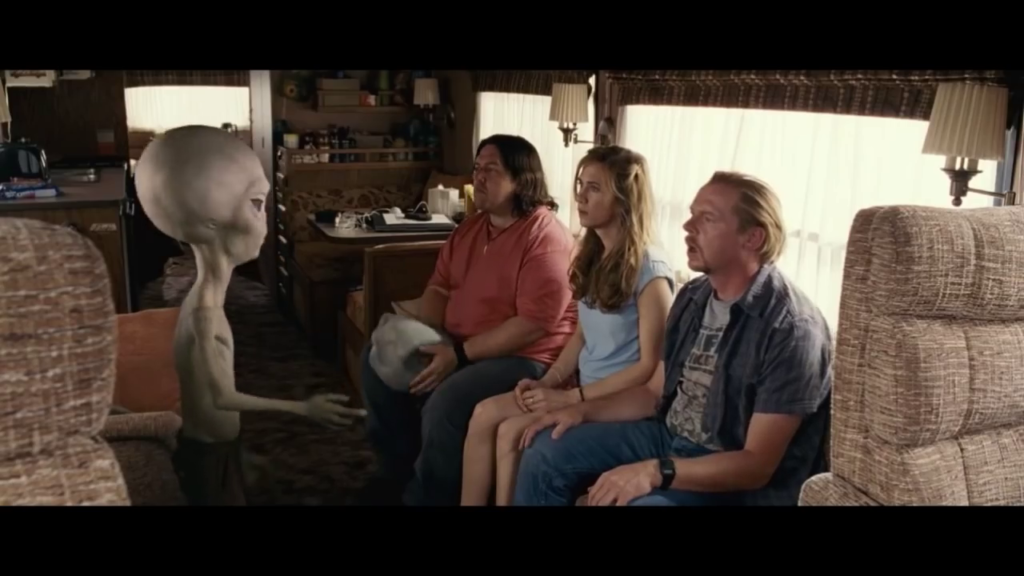
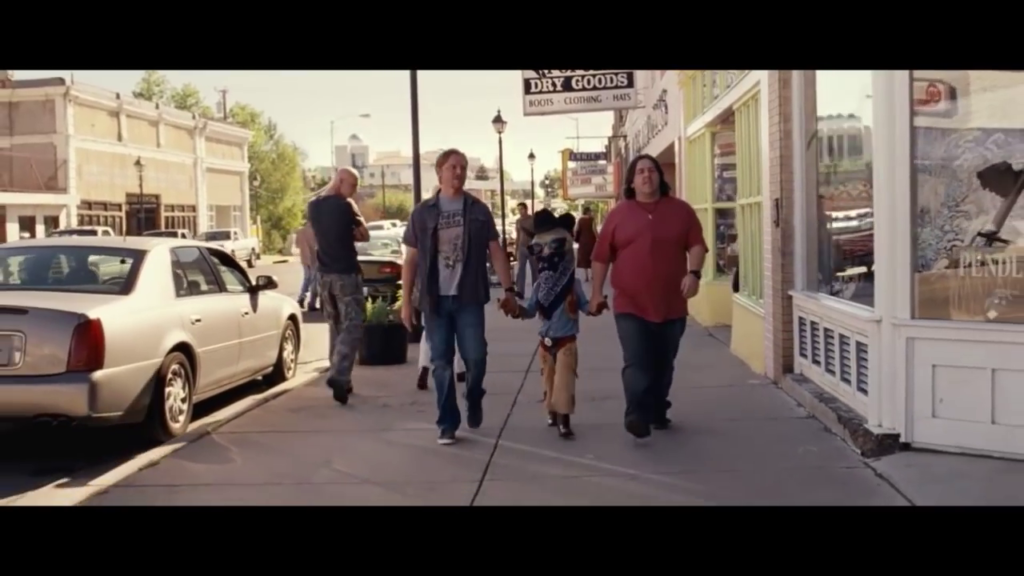
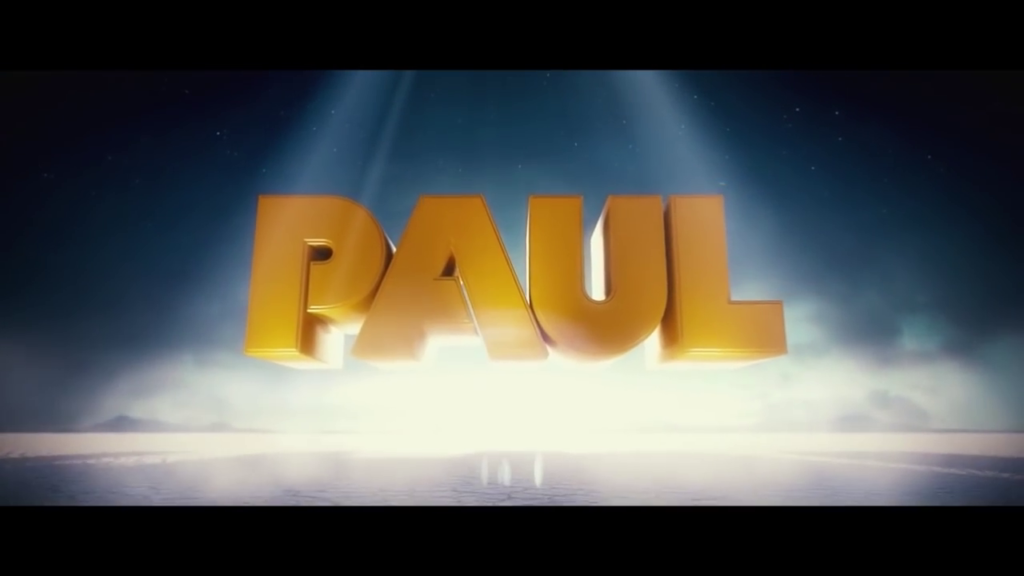
Paul (2011)
Film review #569
Director: Greg Mottola
SYOPSIS: Graeme and Clive are two nerds attending Comic-con. On their road trip towards Area 51, they come across an actual alien named Paul, who is on the run from the authorities that have been holding him. Graeme and Clive end up helping Paul to get to the spaceship that is waiting to pick him up, and in doing so, end up getting chased by a number of people that they have annoyed in the process…
THOUGHTS/ANALYSIS: Paul is a 2011 sci-fi comedy film. Starring Simon Pegg and Nick Frost as Graeme Willie and Clive Gollings, two British nerds and sci-fi artists/writers who are attending San Diego Comic-Con. Being alien fanatics, they take a trip out into the Nevada desert to the sites of Area 51 and the Roswell incident. On the road along the way, they come across an alien named Paul, who is being chased by the authorities after he escaped their custody, and is on his way to meeting a spaceship to pick him up and return home. Thus begins a buddy road trip film that plays out pretty much how you would expect: with plenty of laughs, silliness, and some heartfelt moments too. It’s clearly meant to appeal to a more casual filmgoer, but there’s a decent amount of quick references that more avid fans will pick up on. The story offers few surprises, but you don’t really notice because the film instead offers some quickfire comedy and solid momentum that keeps things rolling. It has a feel of Blue Brothers in parts in the sense that it builds into a chase film that has enough chaotic energy to bring all the characters together and make something interesting.
Simon Pegg and Nick Frost, as always, play the leads with good chemistry, and Seth Rogen as the alien Paul offers a character with enough gravitas and presence that contrasts with Pegg and Frost, but very much like a typical Seth Rogen character. It feels like his character is meant to be a lot more crude, but is perhaps toned down to make the film more mainstream, with only a bit of an edge. Even though Paul is obviously CG, he is still animated and expressive, and his interactions with the cast feel natural, which is a solid plus for the film. The supporting cast are very typical characters, but again, for the casual film viewer, play a part well, and you know what their role is very clearly and quickly.
Paul is a film that works with very broad strokes: it’s comedy is quick and energetic, the story is condensed and easy to follow, and the characters have good chemistry. However, going any deeper you find an awful lot missing that is needed to make the film more memorable and gripping. It feels like the film was conceived with these very broad stroke, and little was done refining this underneath the premise. It plays it safe in the sense that it clearly needs to appeal to a mainstream audience (apparently this is what the funding for the film was based on), and so any smarter references or parodying other science-fiction works is reduced to easily missed one liners that don’t disrupt the flow of the film. The film is still lots of fun, even if you’re not a fan of the crude (but never too crude) humour. It could have been a lot more, but what we have is good enough for an entertaining ride.
-
#540 – Bong of the Dead (2011)
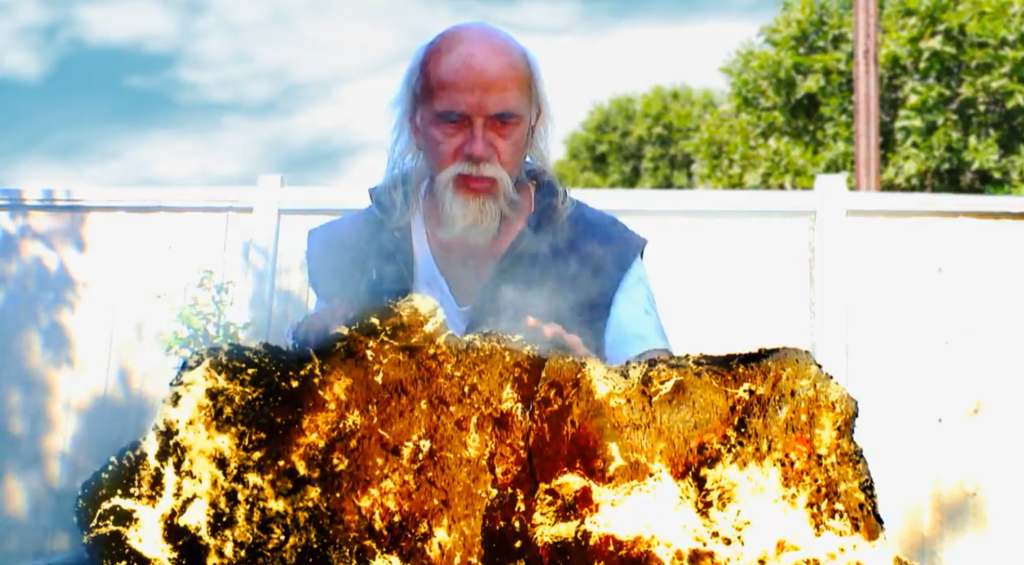
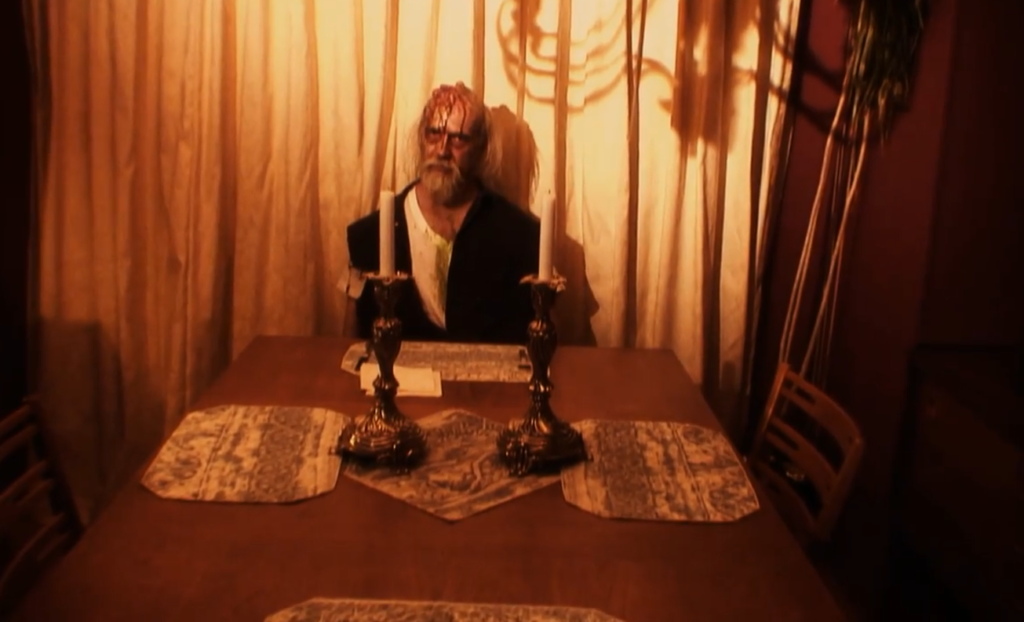
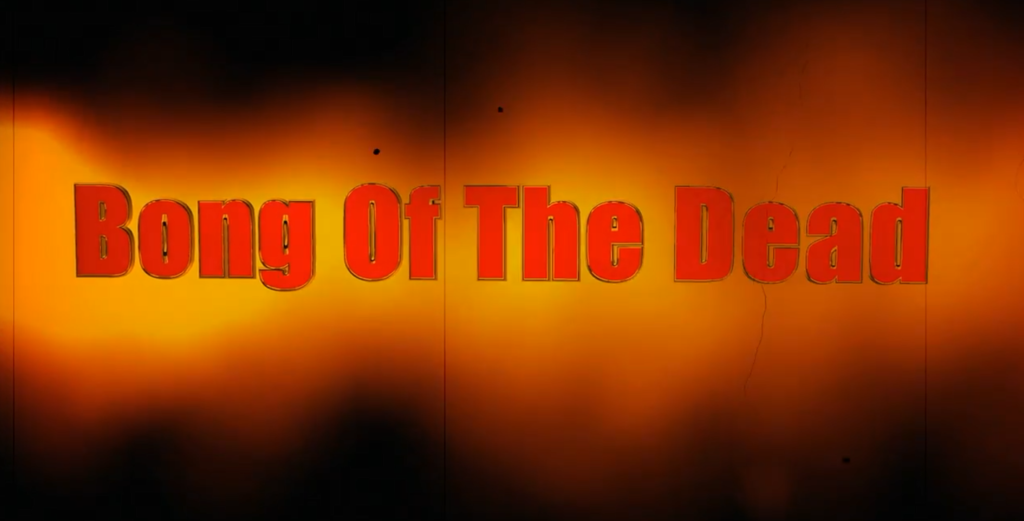

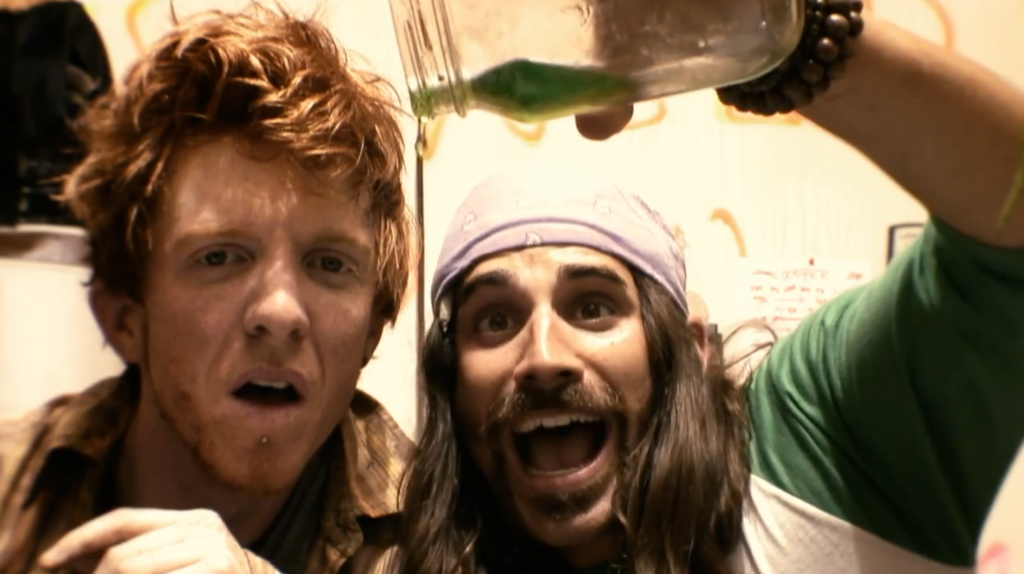
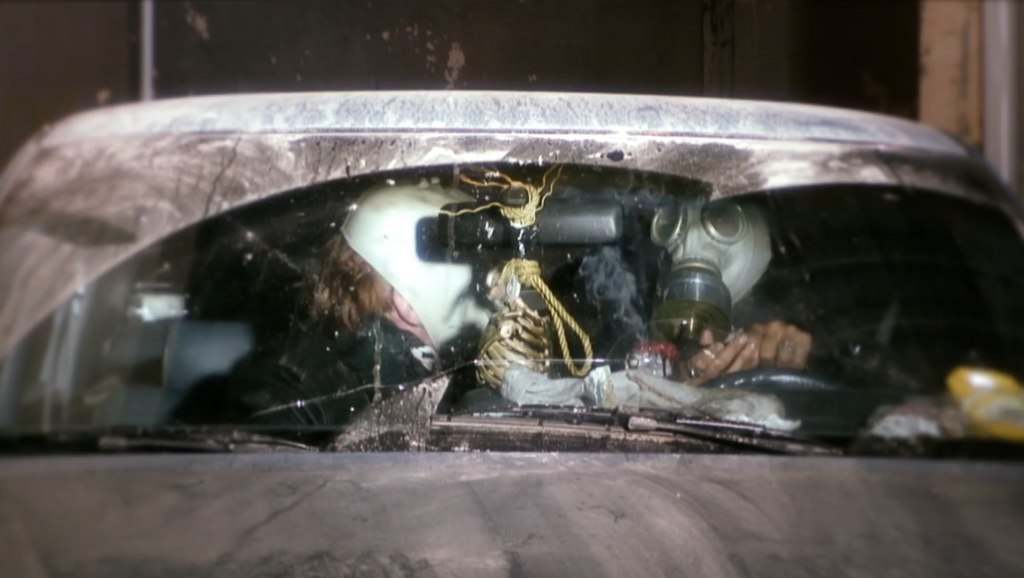
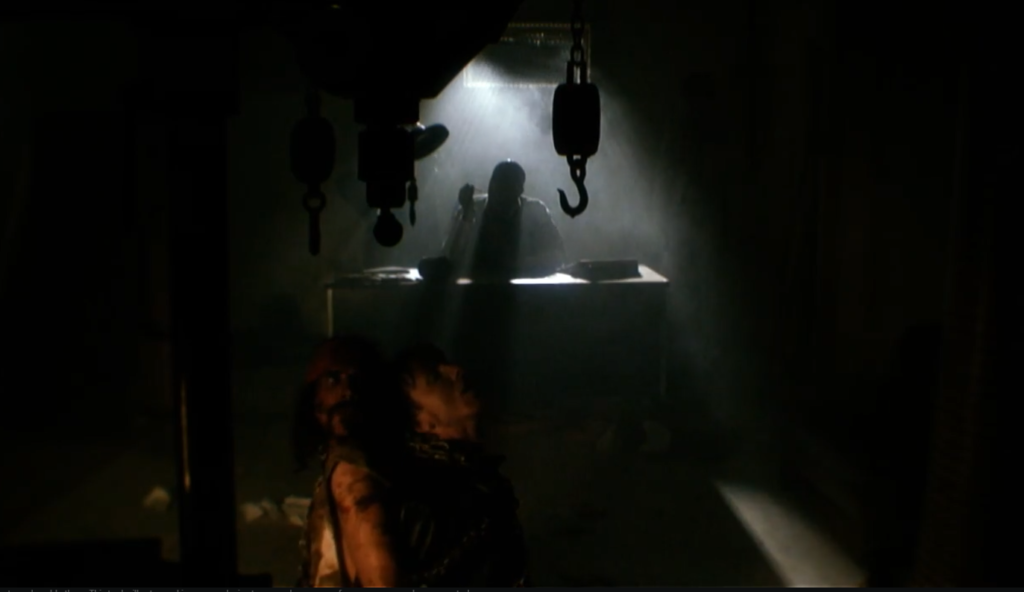

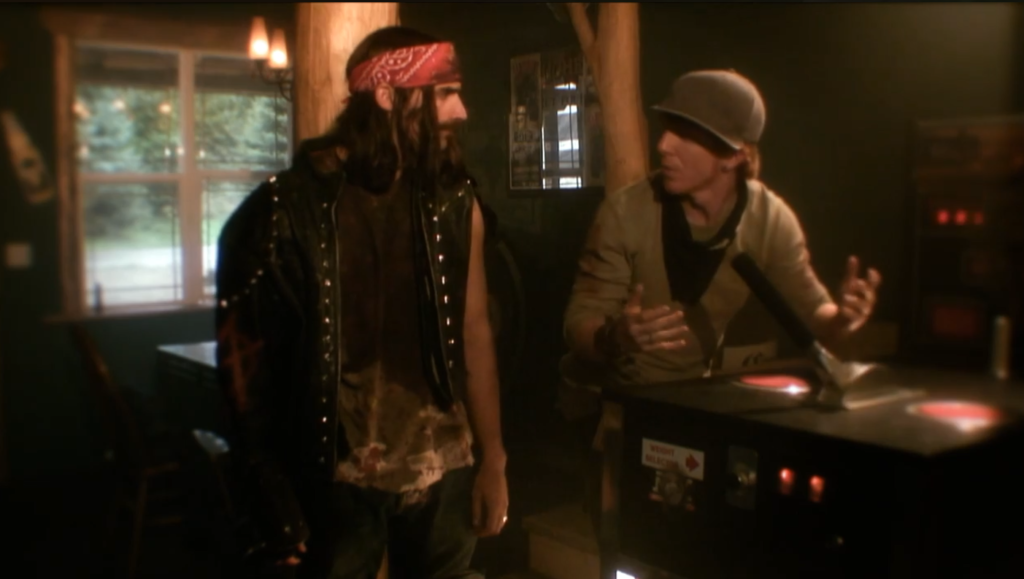
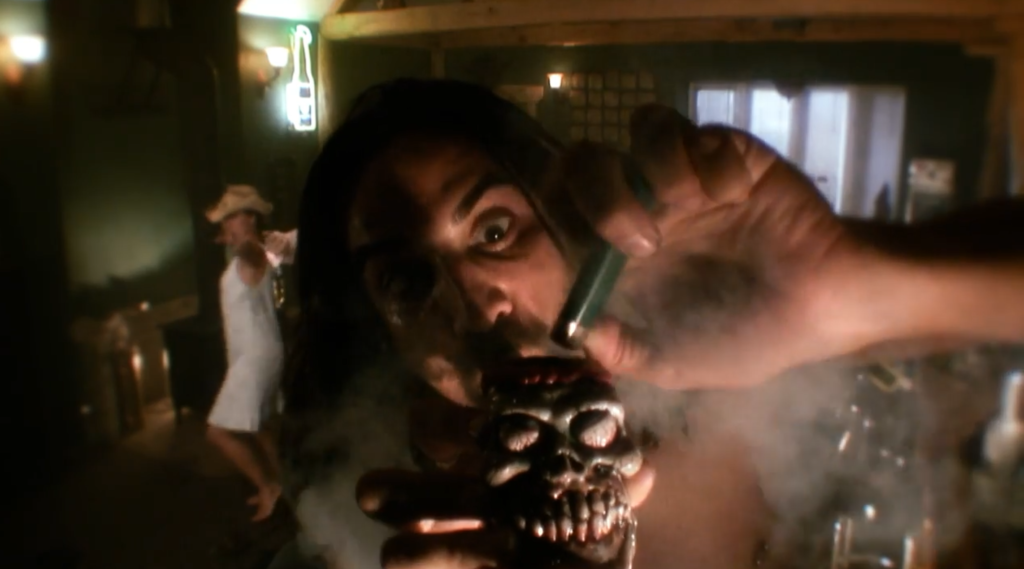
Bong of the Dead (2011)
Film review #540
Director: Thomas Newman
SYNOPSIS: A meteor shower that strikes the Earth has the effect of turning everyone in to zombies and thus causing an apocalypse. A few months after this, two stoners, Tommy and Edwin, discover that the zombies can be used as fertiliser to create super powerful weed. With this in mind, and their weed stocks running low, they decide to travel to the zombie infested areas to get more of their fertiliser, but on the way, they run into a young woman surviving on her own…
THOUGHTS/ANALYSIS: Bong of the Dead is a 2011 film written, produced and edited by Thomas Newman. The film opens up meteors falling to Earth, one of which lands in a man’s garden, who starts to transform into a zombie. This opening scene is played with no dialogue, as we slowly see this man transform into a zombie, along with his wife. This opening scene is fairly clever, using no dialogue, and just showing the man’s transformation using plenty of visual effects. The way his wife is shown to be as much of a zombie as he is when she’s just sitting watching TV is quite clever, and the ending shot of them sitting on the sofa casually picking out each others organs and eating them is such a well executed shot thanks to all the gore and practical effects, and its certainly not what you would expect from a low budget film called Bong of the Dead.
When we get into the film proper, we see something a bit more of what we expect to see: a few months after the meteors have caused a zombie apocalypse and wiped out society (supposedly, we don’t really see anything of it), two stoners, Tommy and Edwin are hiding out in their apartment, when Edwin shows Tommy he has found a way to turn the zombies into fertiliser that can grow super strong weed, they decide to brave going outside into the infected zones to make some more of this weed. Along the way, their car breaks down and thy meet Leah, a mechanic who helps them fix it. I think the film can be easily split into it’s good and bad points: the story is very typical and threadbare, and just consists predictably of a lot of weed smoking and occasional zombies. There’s a villain who appears in two separate scenes, but he doesn’t really have much of a role. The rest of the film is just scenes of empty dialogue that exist probably just to extend the run time. Speaking of which, the film stretches to nearly one hundred minutes, which is way too long for this sort of film. As always, I try not to be too harsh on low budget films like this made mostly by just one person, and try to judge a film based on what it tries to achieve with what it has, but the script definitely needed some help with regards to pacing, content, and just simple cuts. We also get an end credits scene that sets up for a sequel that, unsurprisingly, never came. Why do so many of these low budget films love to set up for a sequel that they never make?
On the positive side, the film’s gore is really good and creative: the practical effects are flowing with flesh and blood, and even in close-ups, it looks pretty convincing. The action scenes where the zombies are getting sliced up look great, and there’s so much blood and gore that covers everyone it’s quite impressive, and gives a real authenticity to proceedings. Apart from this though, the rest of the production is more obviously limited by the budget and being a mostly one man operation, with fairly obvious greenscreens, and a lot of scenes being shot in someone’s house. Even though the camerawork and framing feels like it could have been better, for one person with a camcorder, it’s fine. Overall, for an almost one-man production, Bong of the Dead does some things better than you would expect: the practical effects are good, and there’s some effort put in to throwing about as much blood and gore as possible in some scenes. This is counterbalanced in the story not having anything special outside of typical stoner humour and zombie apocalypse stuff, and an overly long runtime dilute the positives, so we’re left with a fairly typical film that does what you expect. nevertheless, credit where it is due to Thomas Newman for pulling this off almost entirely by himself.
-
#476 – Man From the Future (2011)
Man from the Future (2011)
Film review #476
Director: Cláudio Torres
SYNOPSIS: João Henrique, nicknamed “Zero” is a renowned scientist, who is attempting to develop a new infinite source of energy. When he activates his experimental machine, he accidentally finds himself transported back in time to 1991…on the day the love of his life dumped him. Determined to change what happened that day, he goes about trying to change the events that unfolded, but his meddling turns out to have unintended consequences, and manages to complicate his life in ways he never even imagined…
THOUGHTS/ANALYSIS: Man from the Future (O Homem do Futuro) is a 2011 Brazilian sci-fi comedy/romance film. The film opens up with João “Zero” Henrique, a physicist, about to test a machine that will hopefully create an unlimited new source of energy for the planet. To prove that it is safe, he sits himself at the centre of the machine. However, something unexpected happens, and Zero wakes up in the year 1991, on the day his life changed forever: it is the graduation dance, and Zero is unceremoniously humiliated and ditched by the love of his life; an event that defines his life from that point. Desperate to change what happened, Zero goes to find his younger self and convince him to do things differently. In a very expected and familiar story, he changes events in his own past, which leads to a lot of unintended consequences that makes things a lot worse in the present. The story is obviously fairly typical for a time travel film; with going back to the past altering the future in unanticipated ways. The film is split into a typical three-act structure between going back to 1991, the altered present, and back to 1991 again, and the structure helps stop things from getting confusing. On the other hand, there’s not too much unique that the film offers by playing it so safe. The film obviously (and like most time travel films) takes some cues from Back to the Future, but Man from the Future really strays into copying in some respects; in particular, the key setting of the film being a graduate dance as the turning point in the characters lives. The mixture of sci-fi, romance and comedy feels a bit uneven at times, and it wanders a bit loosely between them as a number of issues are thrown up that never seem to be resolved. For example, there’s a side-issue about trying to prove that “love is a fundamental part of the universe” that gets mentioned, but nothing is ever really done about it.
Zero, the main character, is a bit of a flawed protagonist: his life is constantly overshadowed by being humiliated and ditched by his first love Helena at their graduation dance, and it still impacts him over twenty years later. Nevertheless, he is a professor, and has loads of funding for his research, so it’s hard to feel too sorry for him in that regard. You do see his character change as he realises his meddling in the past only made things worse, and he becomes determined to set things right, making him a more likeable character by the end. Helena as Zero’s love interest doesn’t really have too much character other than said love interest, but her acting is pretty good. It is a bit weird how she just seems to be madly in love with Zero even though we never really see how their relationship develops or how she gets to that point, and it seems like she is in love with him simply because the plot needs her to be. The rest of the characters have their own personalities and are acted well, but don’t play too much of a part in the film.
The tone of the film is often quite difficult to figure out: apart from the mix of sci-fi, romance and comedy constantly competing rather than supplementing one another, there’s also the question of who the film’s target audience is. I don’t think it is older viewers because they would have already seen Back to the Future, and would undoubtedly recognise it as derivative of it (I’m not sure how popular BttF is/was in Brazil). It can’t really be seen as a satire or parody of it either, because despite the similarities, it never does anything to undermine the premises and tropes of time travel films, but rather just copies them. I’m not sure the main character being in their forties really appeals to a younger demographic either, although a few raunchy shots and a youth-oriented soundtrack certainly suggests a younger demographic. Man from the Future, on the whole, is produced and made well, with decent acting, and sets and props that are convincing in their scale and polish. However, it doesn’t offer anything unique in terms of its story, and it’s crossing of genres makes it seem muddled, but overall as a bit of light entertainment, it’s easy enough to sit through.
-
#465 – T.O.R.R. Dawn of the Red
T.O.R.R. Dawn of the Red (2011)
Film review #465
Director: Robert Towne
SYNOPSIS: In the near-future, global instability and war is rife, and the CIA recruits army Captain Beck for a mission deep into enemy territory, where he and his team are to stop a Russian warlord from unleashing a new biological weapon…
THOUGHTS/ANALYSIS: T.O.R.R. Dawn of the Red is a 2011 action film. Set in the “near-future” of 2014, the world is in a period of instability, with new wars and separatism rife across many countries…apart from the United States, which seems to be carrying on as normal (American exceptionalism means those sorts of things never happen there). Captain Beck, a member of the U.S. Army, is summoned by the CIA to escort one of their agents, Sophie Delgado, deep into hostile Russian territory to prevent a local warlord from releasing a new biological weapon. The plot in this regard is simple to follow: it is an action film with a team of soldiers going into enemy territory to stop the bad guy. You don’t need much more than that. When the film tries to create more of a story behind the motivations of the mission and characters, it falls down a little because the dialogue is lacking in impact due to a combination of unconfident acting and muffled audio (more on that later). The editing also hinders this, with cutaways that are meant to explain the plot hurting the pace of the film, and feeling more like an exposition dump. You won’t be expecting too much from the film’s story, but still, it’s confusing details and detours detract from the action-oriented nature of the film as a whole. There’s also some pretty funny moments which I’m not sure are intentionally meant to be, such as a terrorist jumping out of a fridge opening fire, which again makes the tone of the film quite uneven, as you’re not sure how seriously you’re meant to take everything.
The characters again are pretty consistent with the genre, with the main character Beck being a chauvinistic soldier with an attitude problem towards escorting a woman. That’s his only personality trait. Agent Delgado as the only female character obviously conflicts with Beck, but it never develops into anything unique. Perhaps quite surprisingly, it also doesn’t develop into something romantic, which is usually how these things usually go in films. The rest of the cast are pretty forgettable, apart from the Russian warlord “Rasputin,” who is definitely overplayed and hyped up as a villain, even though he’s not really around too much. The characters are further diminished by some very poor acting, and a number of times the actors mess up their lines, and obviously a second take should have been done.
About halfway through the film the action changes tone a bit as we are treated to…zombies. It turns out this biological weapon turns people into “reanimated” corpses, and the team have to fend off waves of zombies instead of soldiers. Again, the tone of the film is subjected to an unexpected change that isn’t set-up, and you’re left wondering how seriously to take everything as the military action switches to this horror zombie survival plot. I suppose the title “Dawn of the Red” is meant to be a double reference to the films Red Dawn and Dawn of the Dead, which I guess this film could be seen as a combination of, and hints of what to expect, but that’s a stretch (I also have no idea what T.O.R.R. is supposed to stand for).
This is obviously a low-budget film, and so there’s a number of production issues that are very distracting and disrupt viewer’s immersion. Apart from the shaky acting mentioned above, the dialogue is very inorganic, and attempts to wax philosophical come across as unoriginal and not worth listening to. Apart from the choppy editing that breaks up the action, one of the most distracting things is the poor quality of the audio and how everyone’s voices are muffled or echoes significantly. Some of the zombie/reanimated make-up is very obviously fake as well, but the film hides it a bit in dimly lit rooms. The lighting overall is also something that stands out, with a lot of scenes being filmed in this weird night-vision which creates a high contrast and obscures some of the action. There’s some attempt to create different lighting effects depending on the situation, but they are typically overpowering. The low framerate of the cameras being used also lead to significant blurring, particularly during the action scenes, which means you can barely tell what’s going on sometimes, and combined with the poor audio, makes it completely unengaging. In a more positive respect, the film makes use of a variety of on-location sets, from deserts to snow-covered forests, which is better than similar low-budget films that might confine themselves to abandoned buildings or greenscreens (of which there are none that I could see in this film).
Given that this is an independently made film without much budget, it is unfair to compare such films to big-budget Hollywood productions. However, even in the context of independent films, T.O.R.R. leaves very little to recommend it. The plot is an unsynthesised mix of military action and zombies that is inconsistent, and the mix of action, horror and silly one-liners will leave viewers alienated from anything that goes on screen as they’ll be left wondering how to connect with what is happening. The story and characters are completely forgettable, and the poor dialogue and delivery of lines further stifles engagement. While there’s obviously been a decent amount of effort put into this film with regards to location shots, and getting authentic looking weapons, the poor audio and blurry visuals combined with obtuse selection of lighting makes many scenes incomprehensible, and ruins most of the positive moments the film has. Overall, I don’t think there’s anything unique or interesting to recommend here.
-
#447 – Gingerdead Man 3: Saturday Night Cleaver
Gingerdead Man 3: Saturday Night Cleaver (2011)
Film review #447
Director: William Butler
SYNOPSIS: The Gingerdead Man has been locked up in an asylum, but he is inadvertently freed by animal rights activists, and steals a time travelling device, ending up in 1976. Winding up at a roller disco, the Gingerdead Man decides to engage in yet another killing spree, while the roller derby itself has it’s own problems in the form of imminent closure, the announcement of the roller derby queen, and the niece of the owner finding her love for roller disco to the horror of her aunt…
THOUGHTS/ANALYSIS: Gingerdead Man 3: Saturday Night Cleaver is a 2011 film and the sequel to Gingerdead Man 2: Passion of the Crust. The film starts off at the Scientific Institute for the Study of Homicidal Baked Goods, where FBI agent Clarissa Darling is visiting the Gingerdead Man, intending to secretly kill him for possessing the soul of her brother, who was killed in the last film. In case you couldn’t tell, this opening is a parody of Silence of the Lambs (Clarrisa Darling/Claire Starling). Before Clarrisa can exact her revenge, a group of animal right’s activists storm the lab in an attempt to free the captives, mistaking the evil pastries for animas that have been experimented on (in particular, thinking the Gingerdead Man is a chimp of some sort with his tail chopped off). The Gingerdead Man makes his escape and stumbles upon a time travel experiment conveniently underway down the corridor, murdering the scientist’s and stealing a remote that allows the Gingerdead Man to travel back in time. This opening is…decent, I suppose. A Silence of the Lambs parody is hardly original and ground-breaking content, but it augments it with some creative designs of the other imprisoned pastries and some humour from the animal rights activists in their mistaken identities. It is also abundantly clear that the emphasis is on comedy rather than horror, so viewers in search of gore will be found.
The Gingerdead Man winds up in 1976; at a roller disco specifically. Even more specifically, it is the last night of the roller disco before it is closed down. The story centres around the patrons and staff of the disco, in particular the owner’s niece who is forbidden from skating finding a love for it and also love for one of the workers there. It’s a pretty typical story that parodies films like Grease and Saturday Night Fever (hence the subtitle), but the satire never really has any impact, and lacks the originality to stand out in it’s own right. That said, the story is consistent, well-paced, and plays out across the cast of characters fairly evenly, so that everyone contributes something, making their personalities stand out a bit. The Gingerdead Man goes on his murdering spree in the background of these events, until the big reveal, which means his antics never feel like the focus of the film until the climax. The same set-up was used in Gingerdead Man 2, but there it felt more messy because the overarching story (of a struggling film director) just wasn’t straightforward enough. The setting of the roller disco has a simple, relatable story, but also a cast of characters that become recognisable, and have a certain weight attached to their butchering by the evil pastry. The film eventually pushes itself towards the ridiculous, when the owner reveals that she no longer skates because the last time she did she caused Pearl Harbour (long story…), and the Gingerdead Man being defeated by bringing the most evil people from the past to stop him, including Hitler of course. So while the story is simple to follow, it lets itself get silly.
Like any other Full Moon Pictures film, the effects and production are minimal, so there’s never anything flashy or remotely convincing about the effects. There’s a mix of practical and CG effects, and it’s good that it doesn’t rely too much on the latter. The Gingerdead man himself is a lot more goofy looking in his design, and definitely seems less threatening (not that pastry is very threatening in the first place I suppose), but the fact that he rarely interacts with other characters (except when he kills them) means there’s no awkward interactions between the puppet and actors. The CG effects on the gore aren’t entirely convincing, but help give an over-the-top feel to the kills, which is where the comedy comes from in part. While the story is set in a roller disco, it is also pretty obvious that almost none of the cast can roller skate and dance. There is one actor that clearly has experience where the rest of them just move around the floor without trying to fall over. The transitioning of scenes often cuts t this one guy showing off some moves, but never anyone else.
Overall, I am inclined to think Gingerdead Man 3 is the best in the series (so far). It is structured soundly in terms of story and pacing, even if the story itself is lacking and the satire lacks bite or originality. The setting is recognisable, its cast has personality, and lets itself embrace the absurdity of the concept of time travelling evil pastry. It’s never going to get beyond a 3/10 in terms of rating, but it delivers something at the very least coherent, watchable, sometimes funny.
-
#423 – Evil Bong 3D: The Wrath of Bong
Evil Bong 3D: The Wrath of Bong (2011)
Film review #423
Director: Charles Band
SYNOPSIS: A strange meteorite crashes onto earth, and a man discovers a bong inside of it. Meanwhile, Alistair McDowell finds it later on alongside his old buddy Larnell, and when the bong coincidentally is bought by their old roommates Brett and Bachman, the group must again stop an evil talking bong from trying to take over the world…
THOUGHTS/ANALYSIS: Evil Bong 3D: The Wrath of Bong is a 2011 comedy horror film and the third film in the Evil Bong series. The film opens up randomly with a man burying his wife in the woods after he seemingly killed her. This plays no part in the story other than this opening scene. As he is walking home, he finds a meteorite that has crashed to Earth, and inside is surprisingly a bong. Later on, Alistair McDowell, the protagonist of the previous films, now working for the Space Institute, finds the meteor and undertakes an analysis. He runs into his old friend Larnell, who remarks he didn’t recognise him (a reference to his recasting, which was also done in the second film), and explains he has been training with a “ninja master,” and as usual is knee-deep in conspiracy theories. Meanwhile, Brett and Bachman, now running a weed shop, buy the mysterious space bong off the old man that found it in the meteorite, and find that it is once again an evil bong that wants to take over the world. The story is practically identical to the previous films: an evil talking bong is trying to take over the world, and anyone that smokes from it is taken into the inner “bong world” where the bong tricks it’s victims with illusions. The remaining cast must venture into the bong world to rescue their friends and defeat the bong. Simple stuff, but it has to be simple when you’re a film that’s designed for people to watch when high. Being the third film in the franchise (not since Attack of the Killer Tomatoes has a film franchise been so unnecessary), there’s actually evil bong lore that the film dives into which establishes continuity between the films, but as I said, you’re not going to be too focused on the plot when watching this.
The cast is made mostly up of characters from previous films, which provides a sense of continuity, even though it’s not necessary. Alistair, Larnell, Brett and Bachman are the same guys from the previous films, and nothing has changed much for them. Rabbit, the delivery guy who for some reason seems to have become a main character, is now a priest, and Larnell’s grandfather, now calling himself Dr. Weed, is fully converted to supporting marijuana after his escapades in the jungle in the previous film. And of course, the original evil bong herself turns up to offer advice on defeating the new space bong, with her usual sassy attitude. The expanded cast means there’s a bit of variety between their different perspectives, but there’s no stand-out performances of character developments.
The main problem with this film is it is almost exactly the same film as it’s predecessors, without adding anything new to proceedings. The effects are a bit better, and there’s more than two sets unlike the previous films, but there is so much time spent on the characters standing around talking that it becomes a bore. When characters start trying to explain their motivations it becomes difficult to follow, and there’s always a feeling of it simply not mattering whether you know their motivations or not. Ideally, the film should be breaking up this dialogue with some funny one-liners or jokes, but there’s barely any of that. The bong only really becomes the focus of the last act of the film, which under-utilises the main draw of the film. Despite all this, I think this one still improves on the second one just because of there being more than two locations, and the lore of the evil bong series starts to give the characters and ideas a bit more substance. The acting is still flat, and the budget is still low, but it’s still going to appeal to it’s target audience with plenty of weed smoking, ridiculous voice-overs, and partial nudity.
